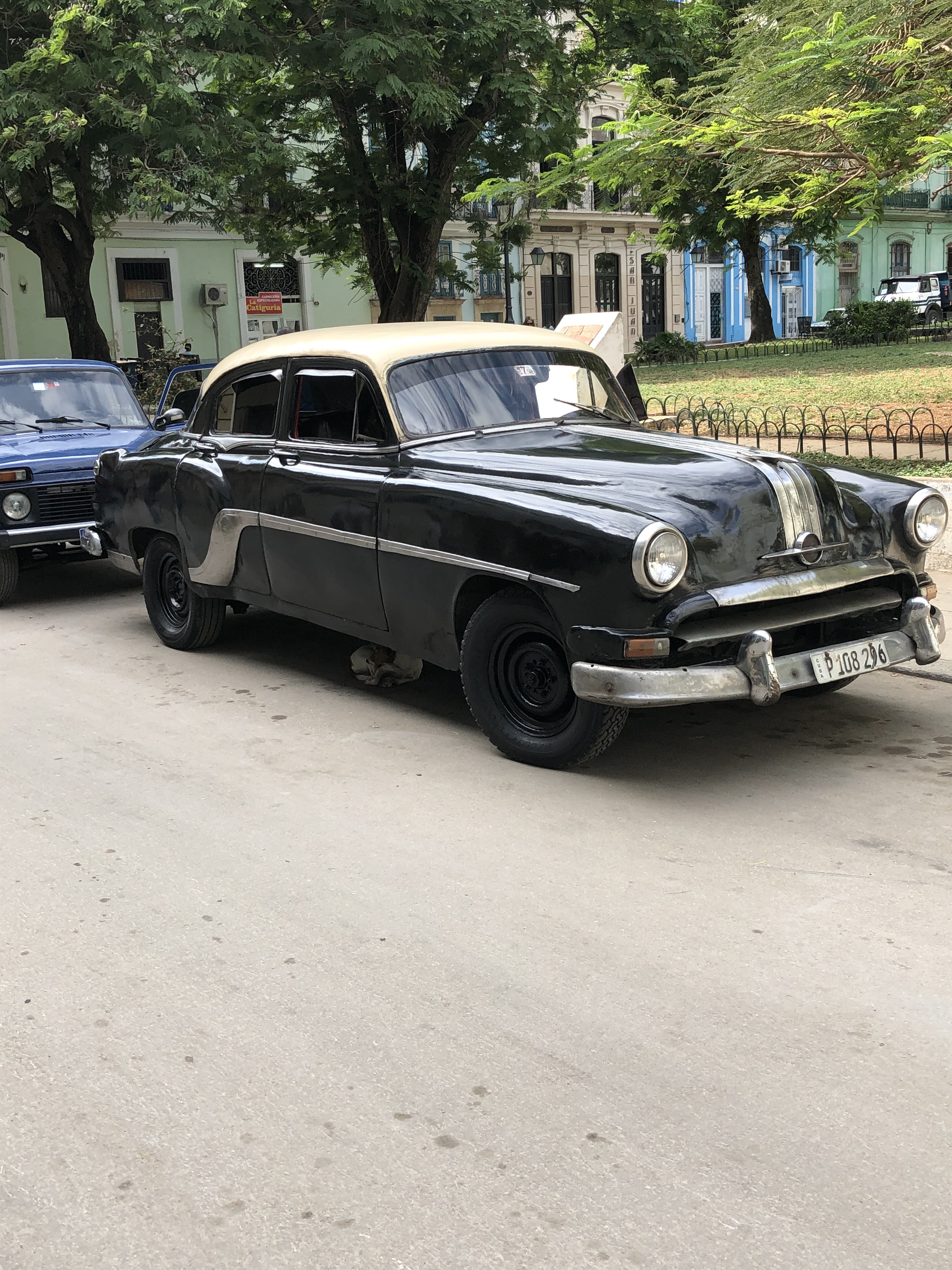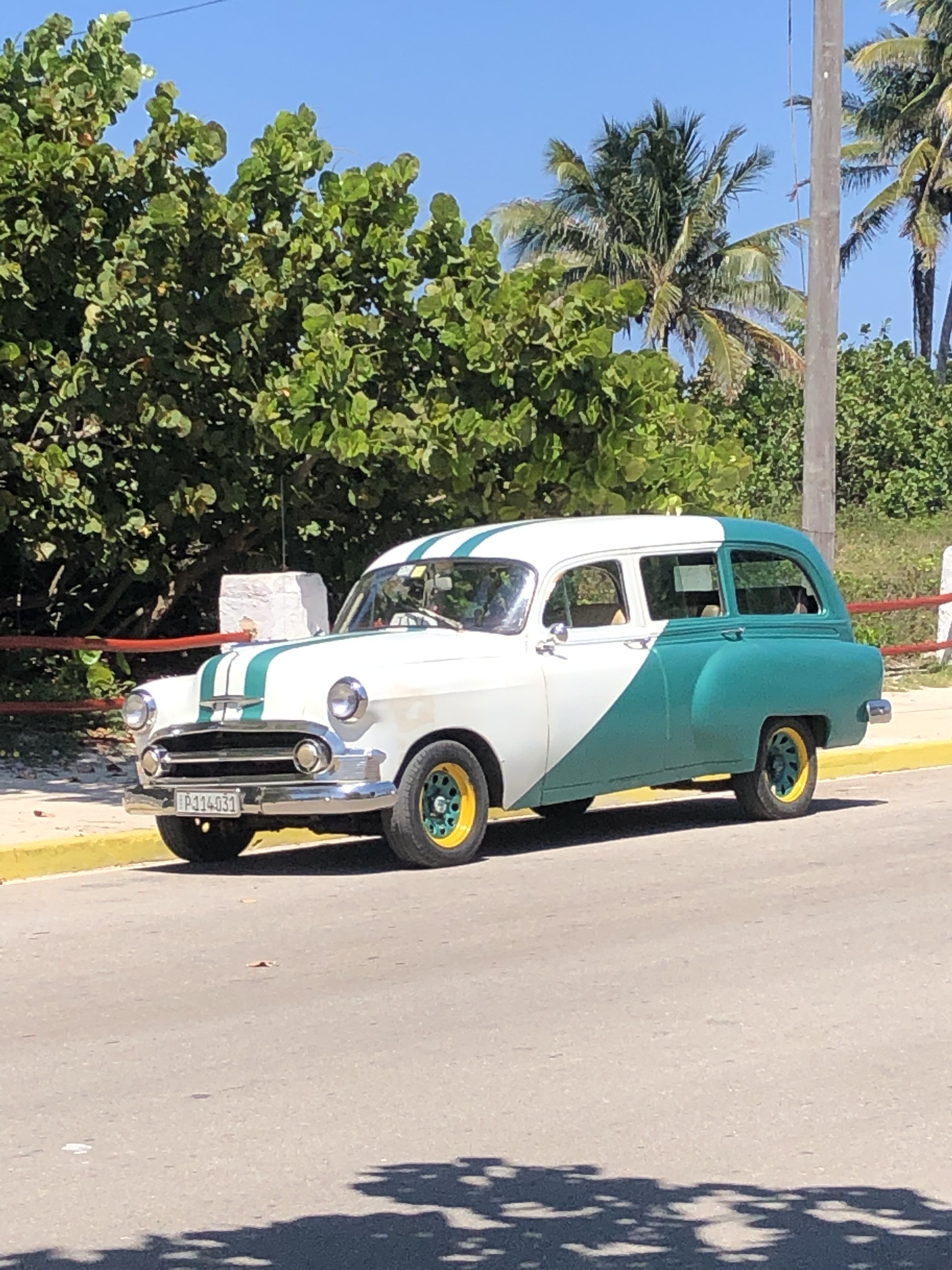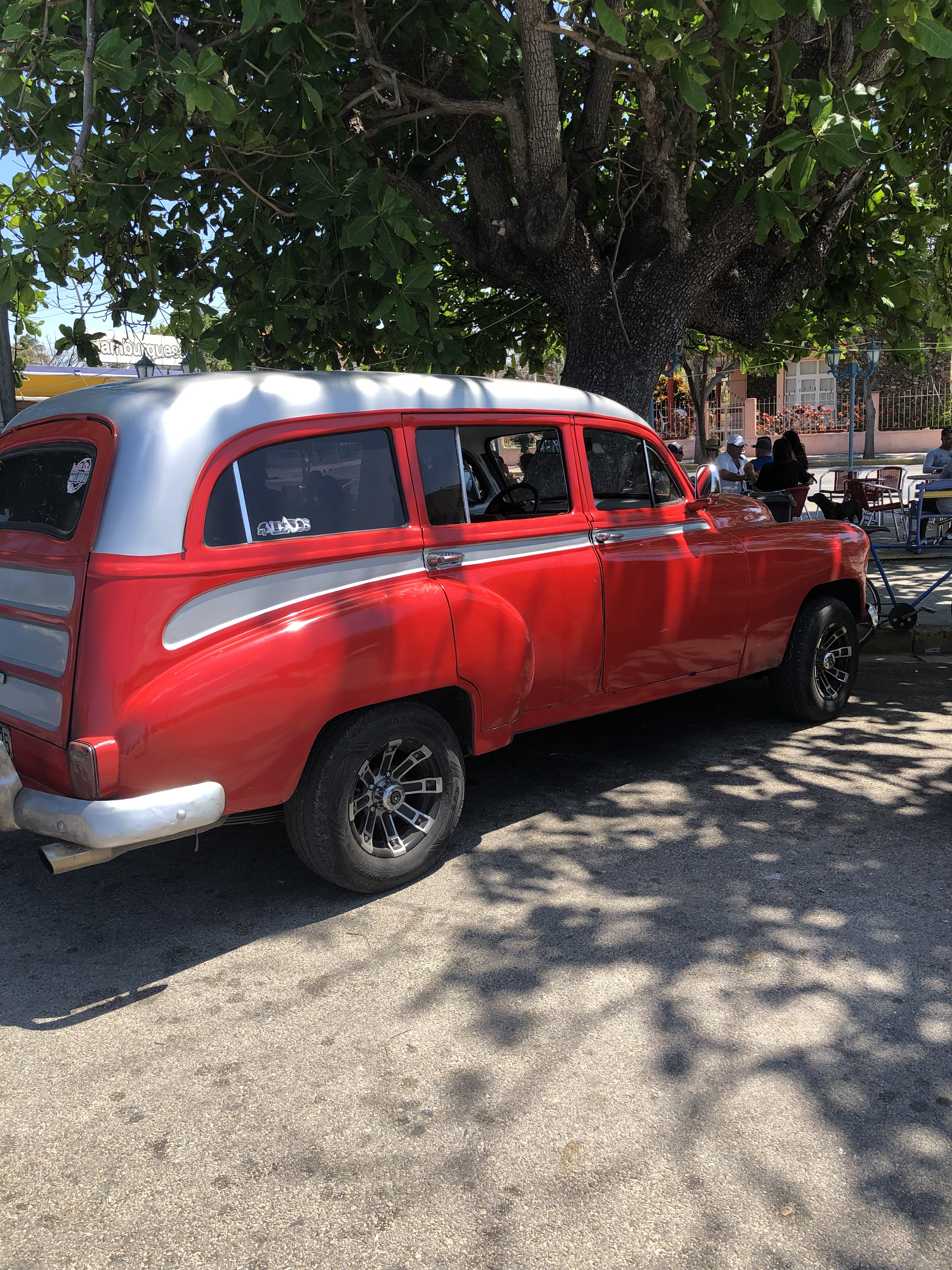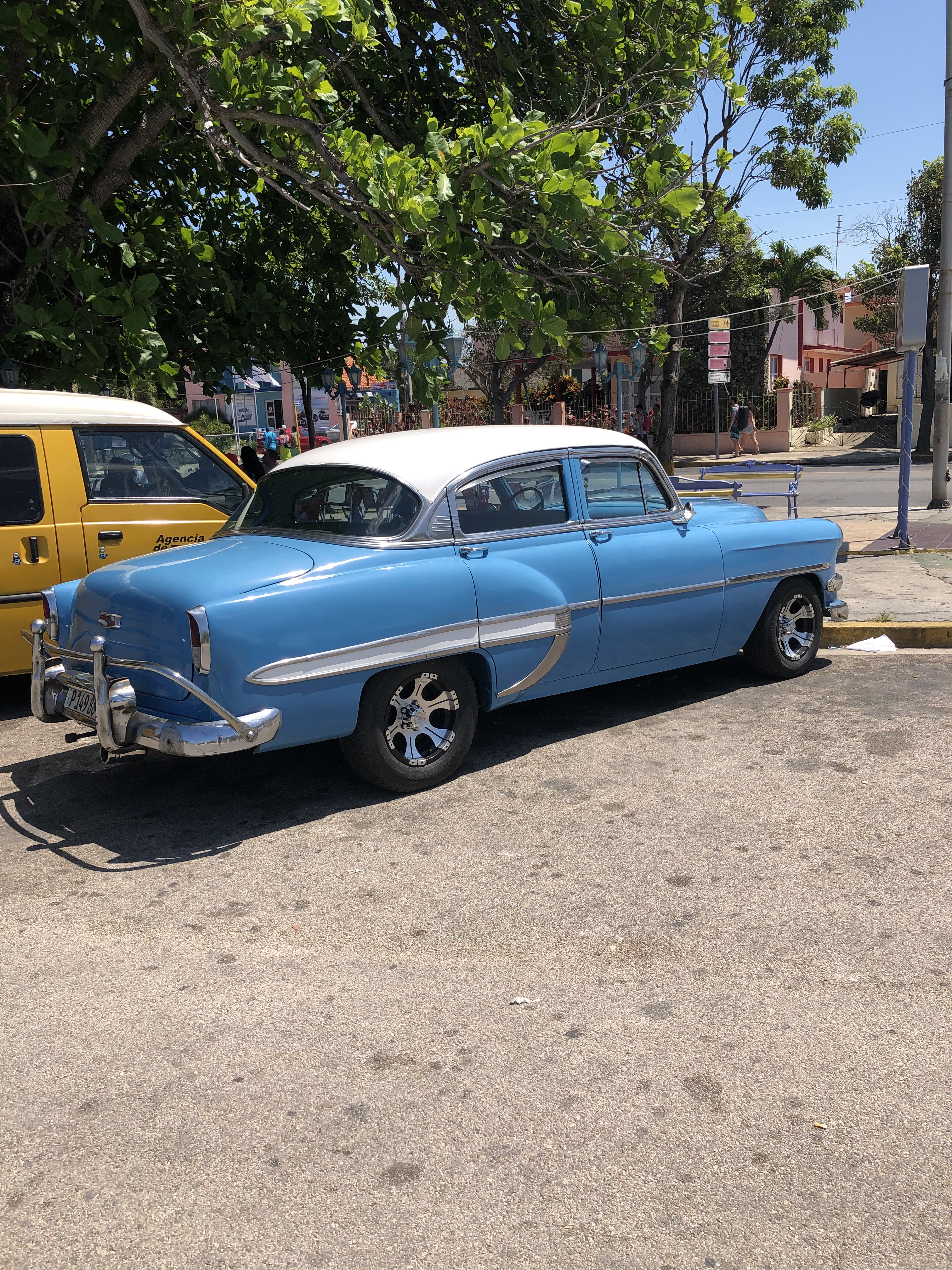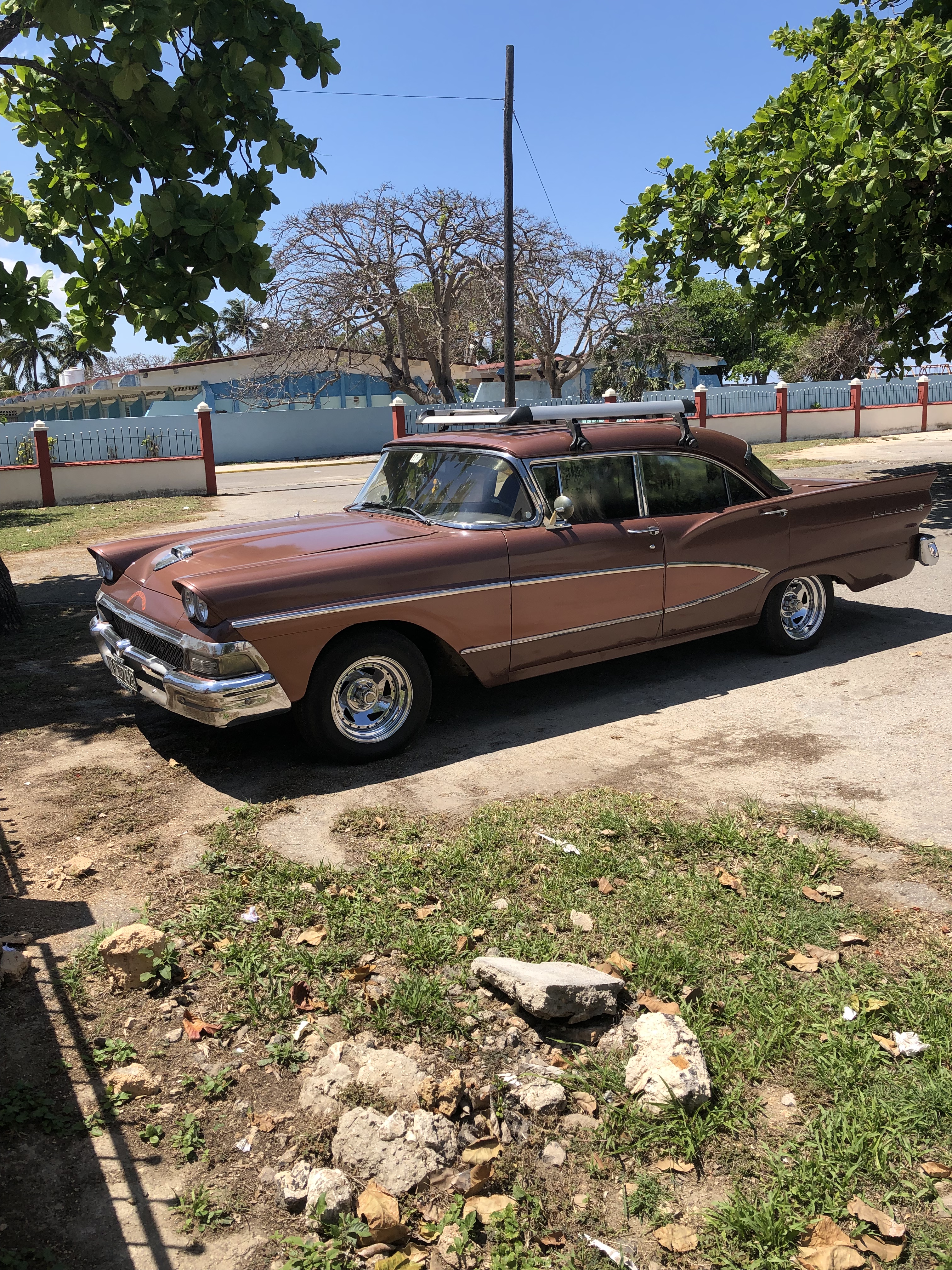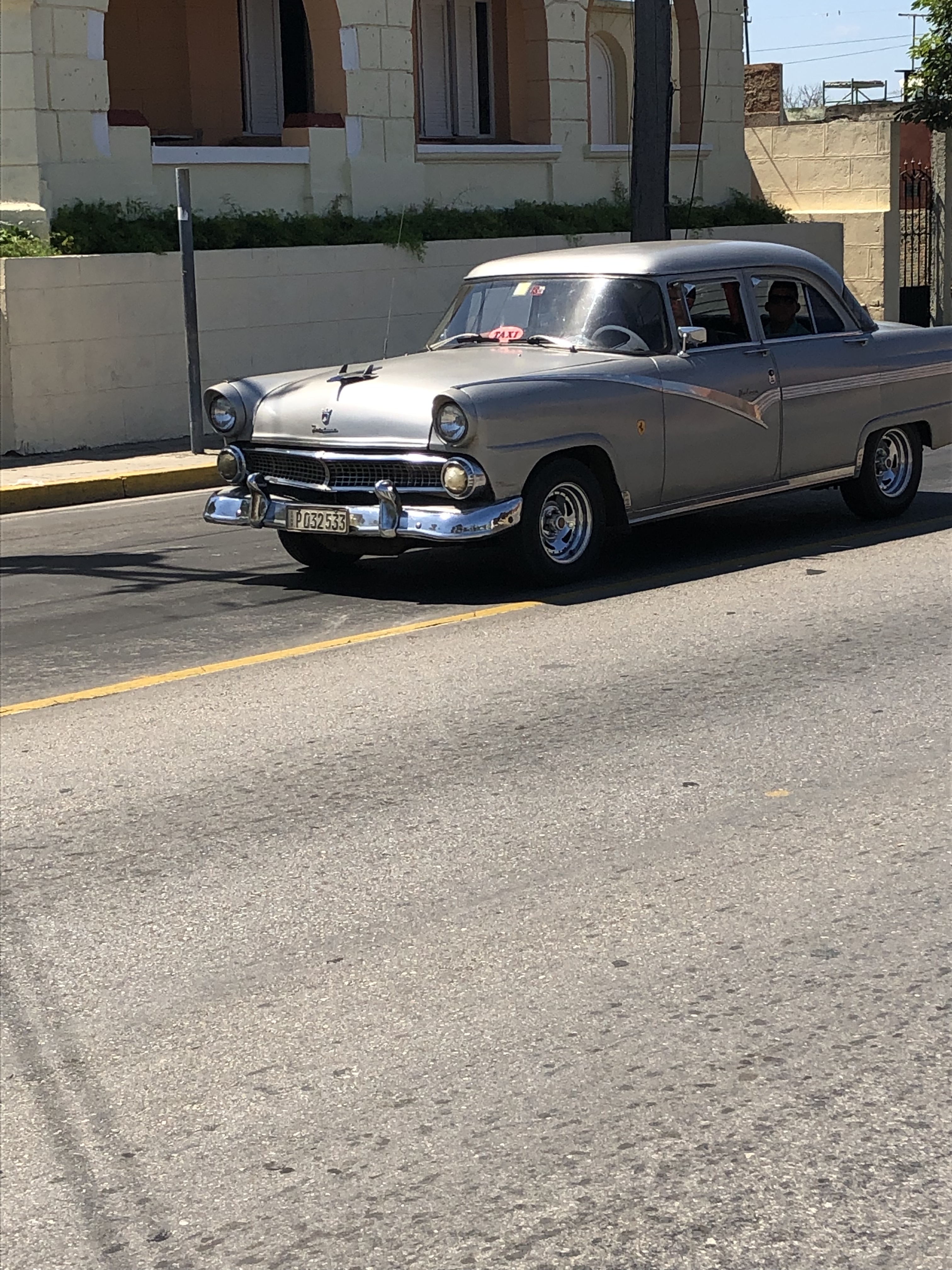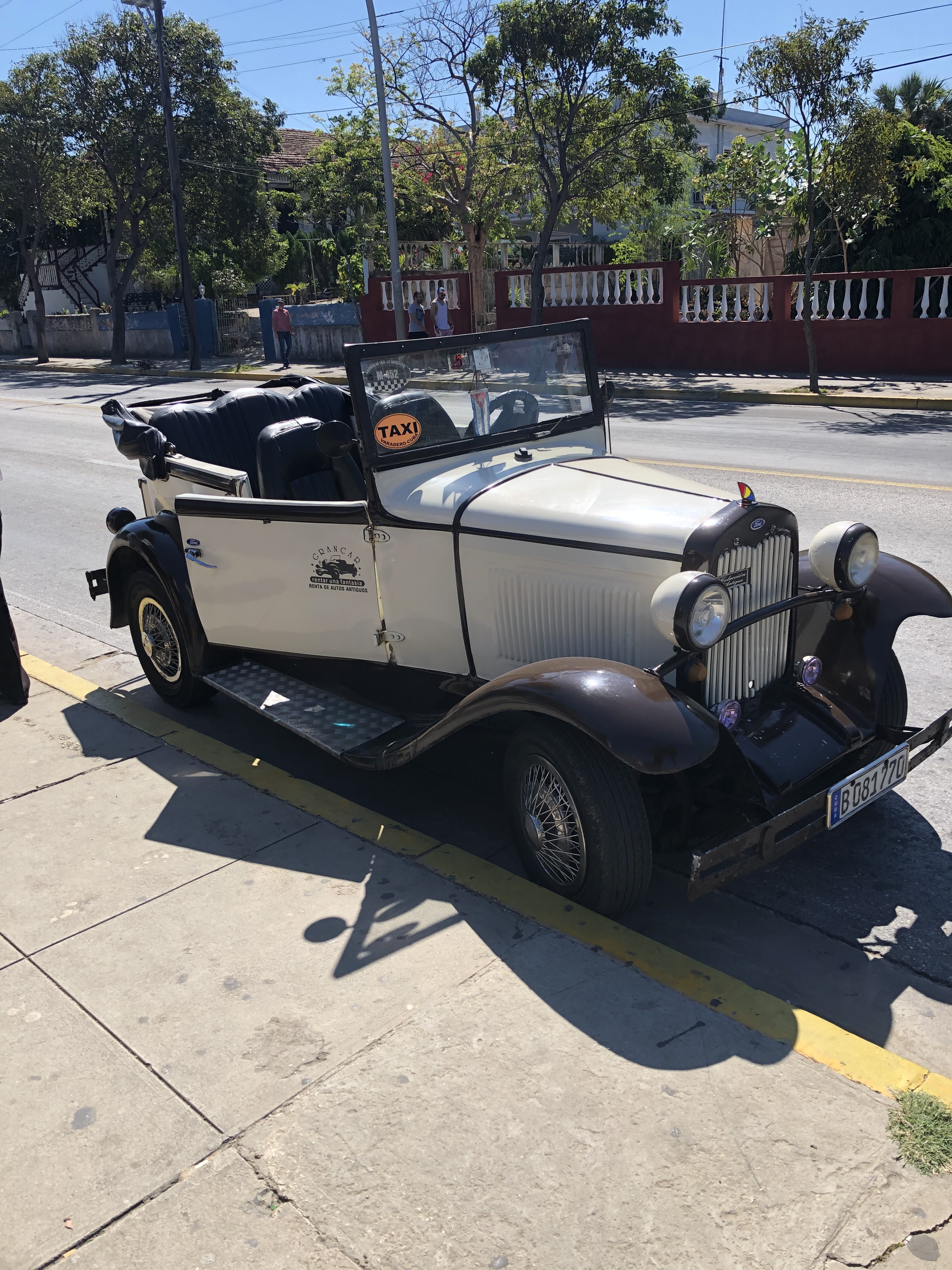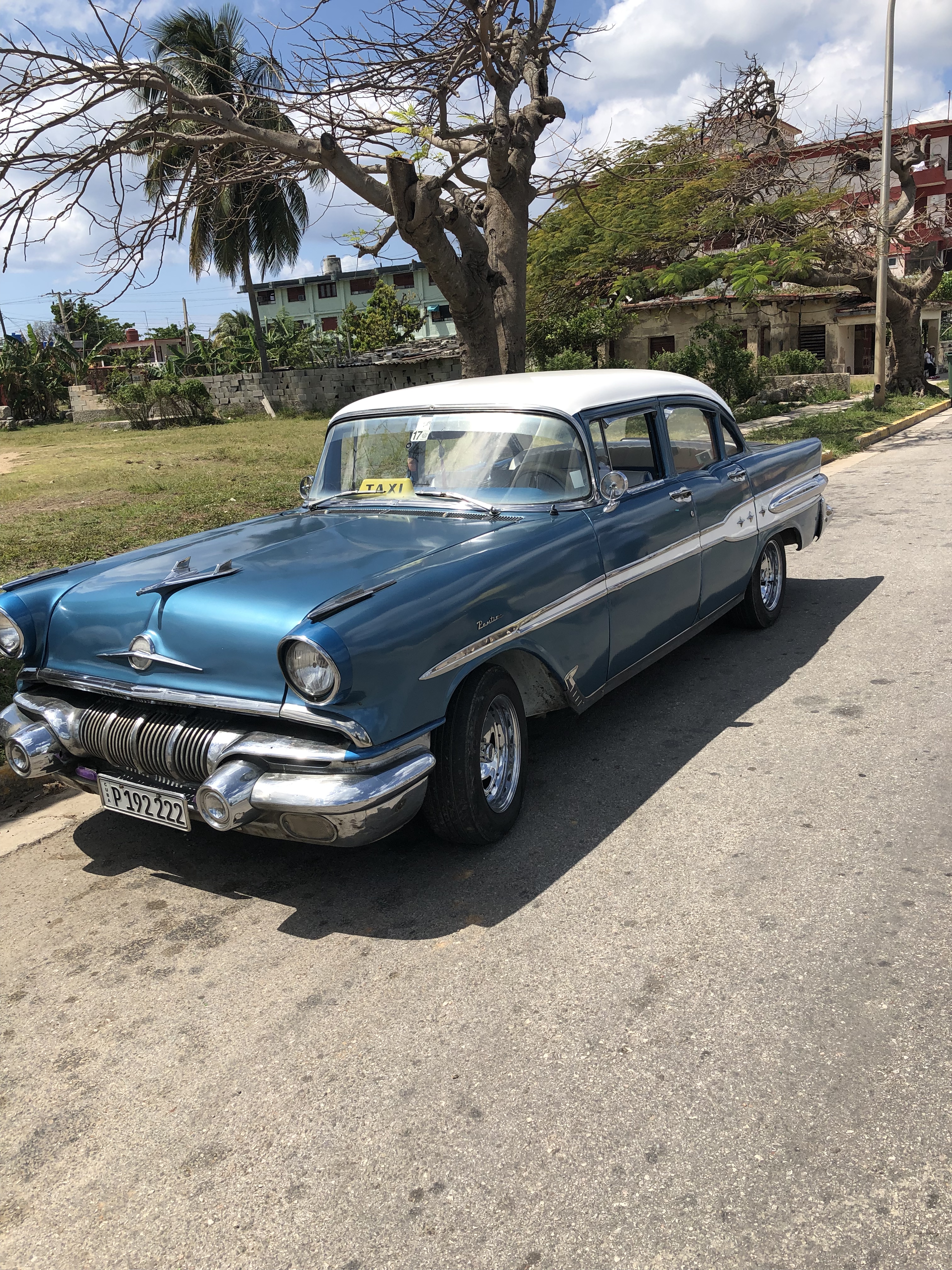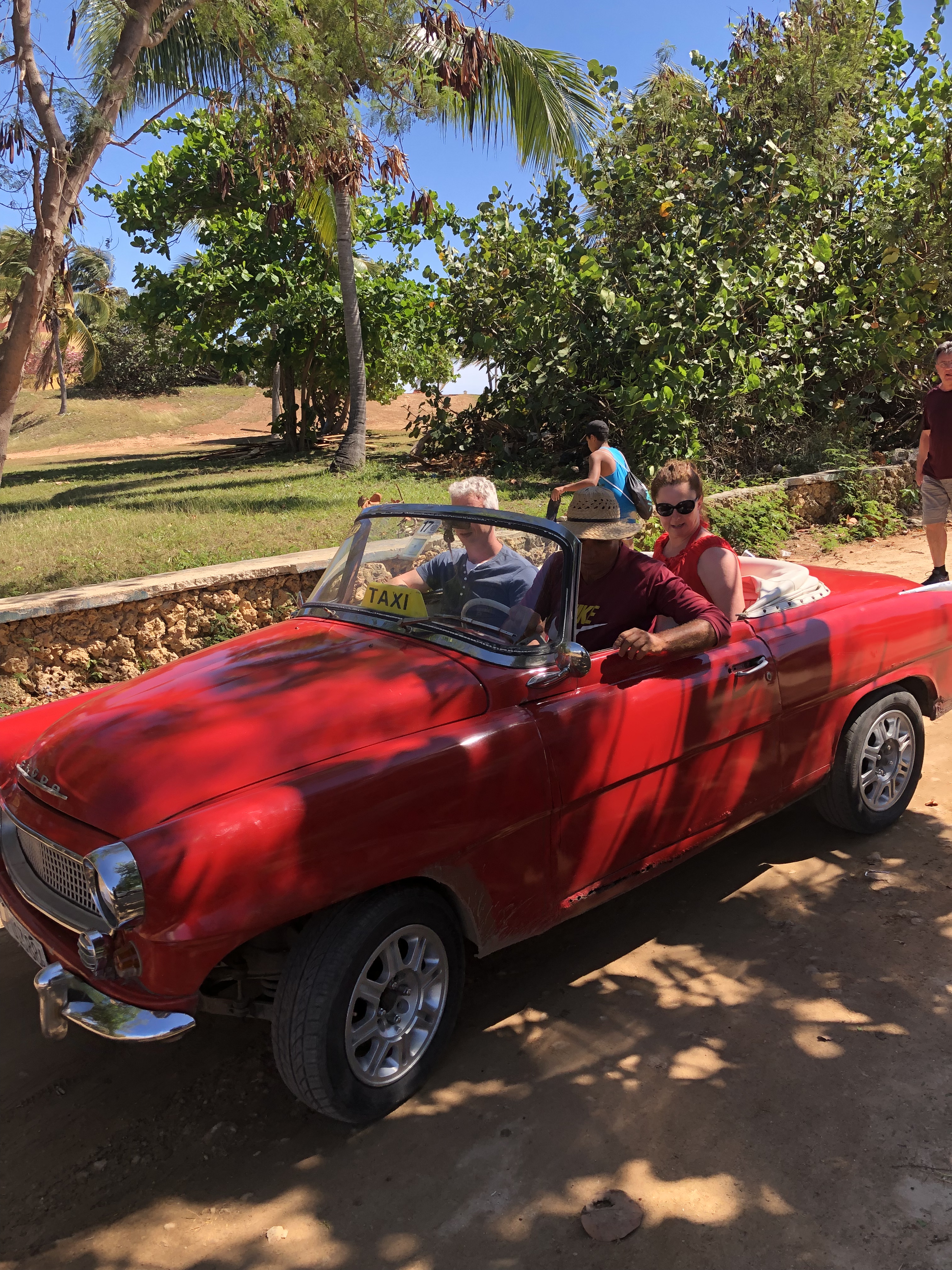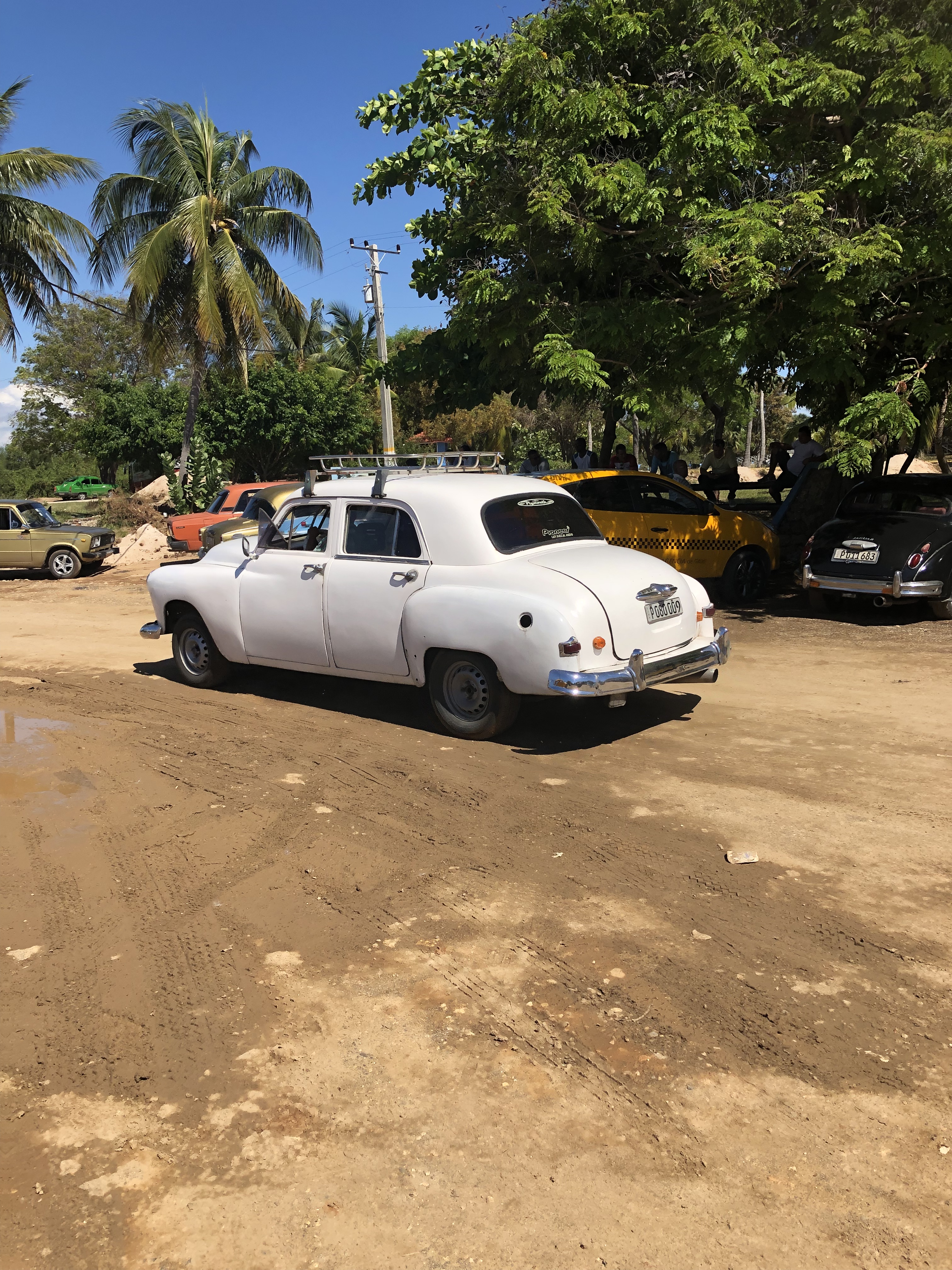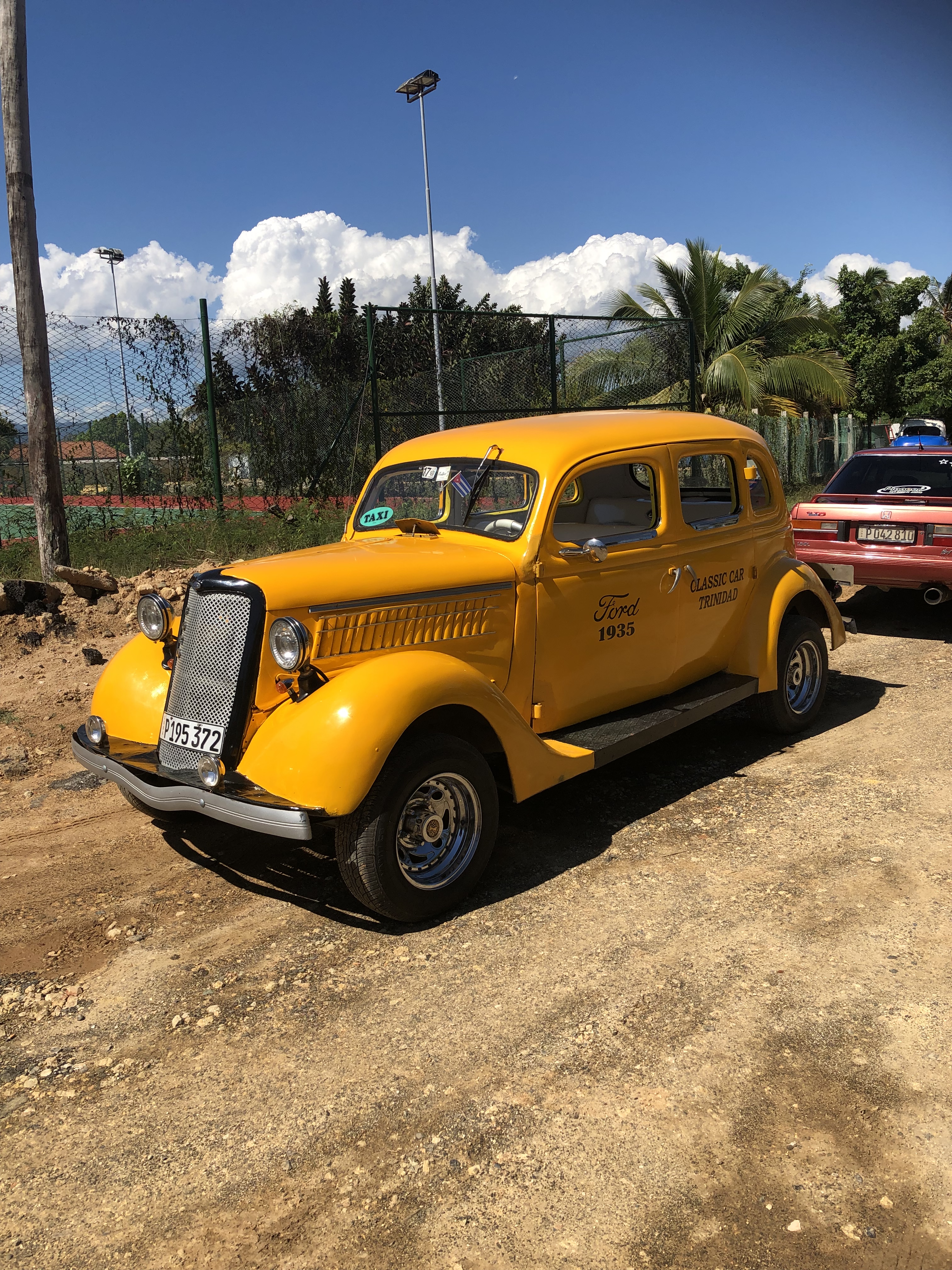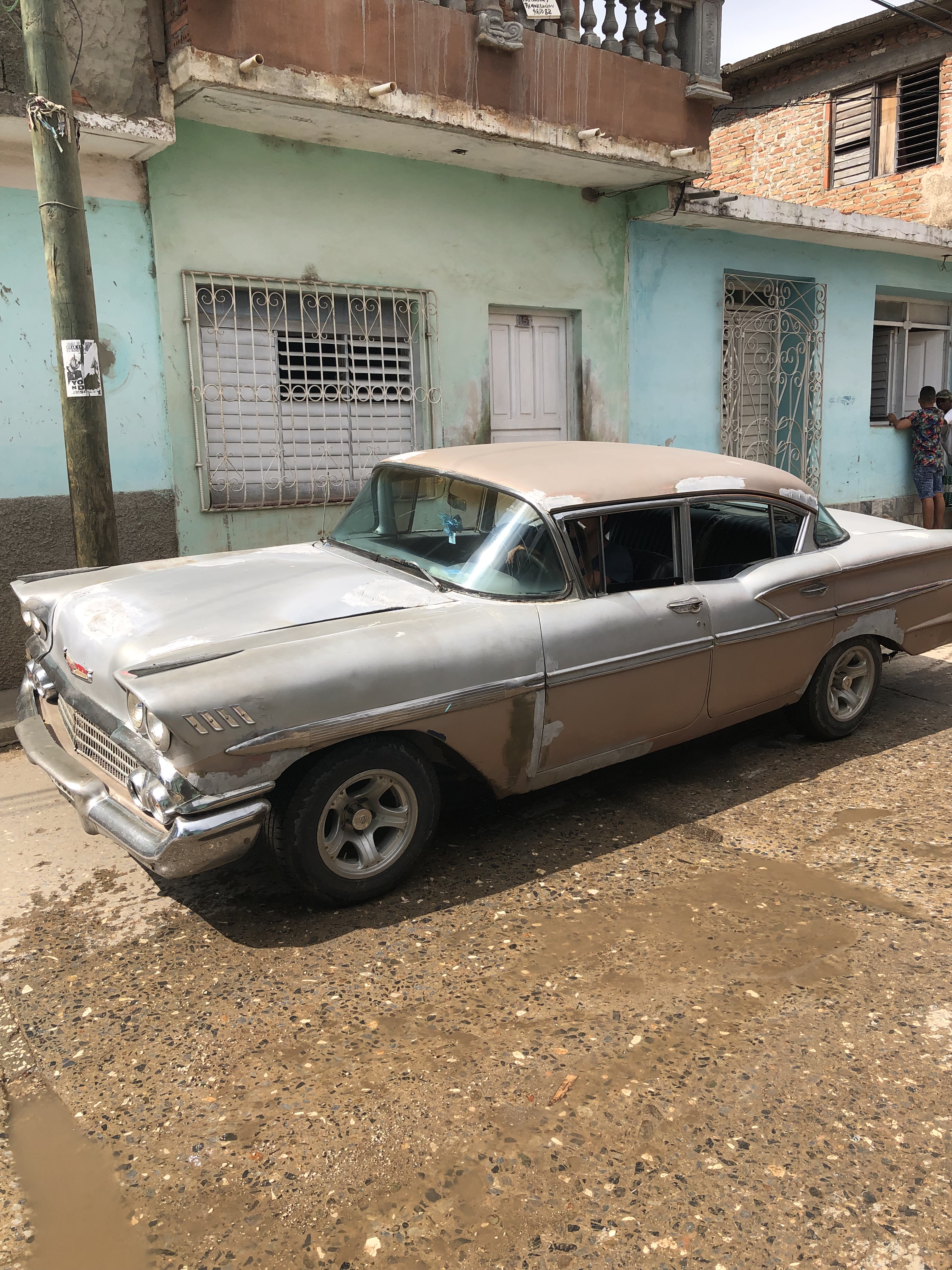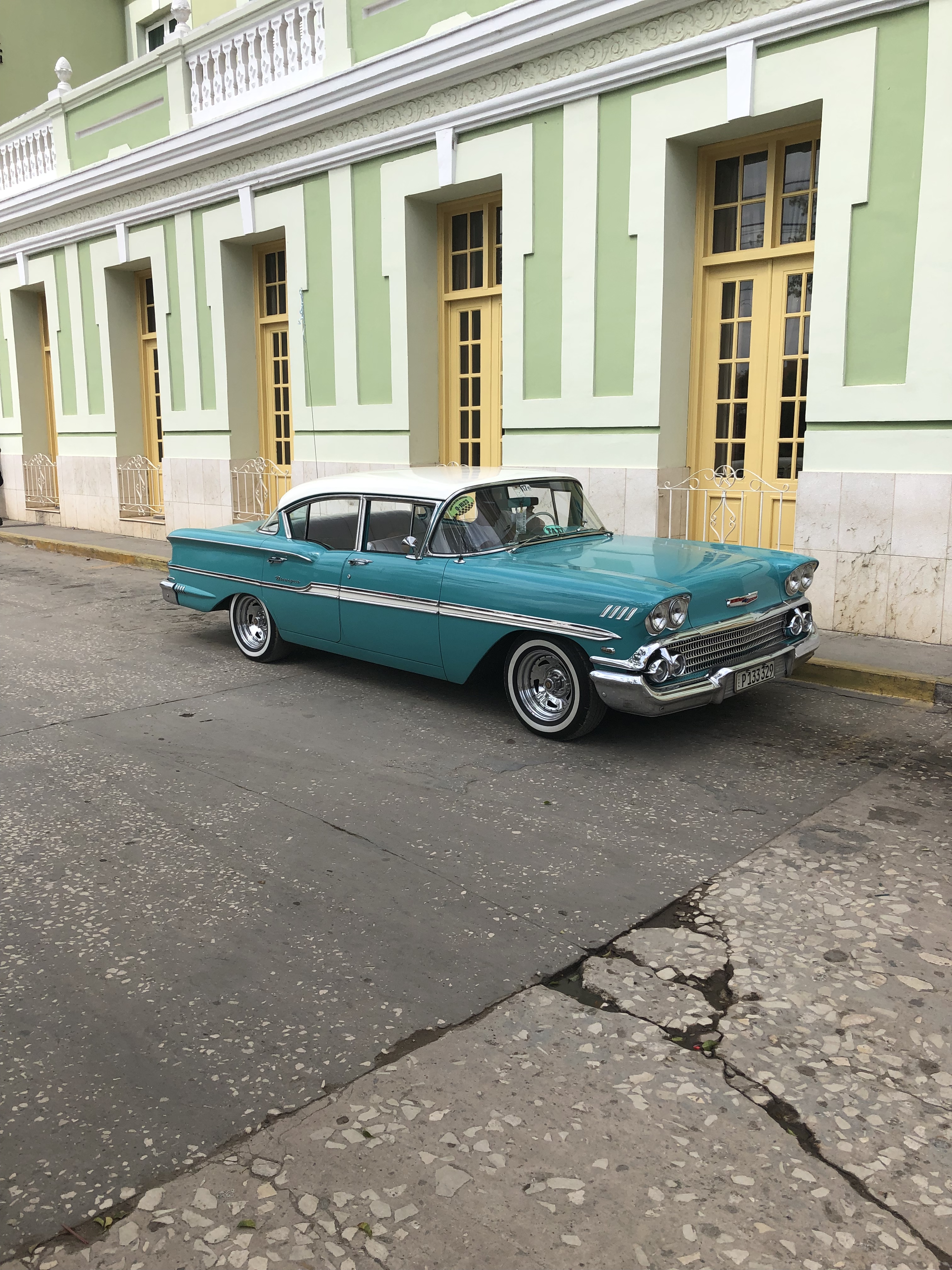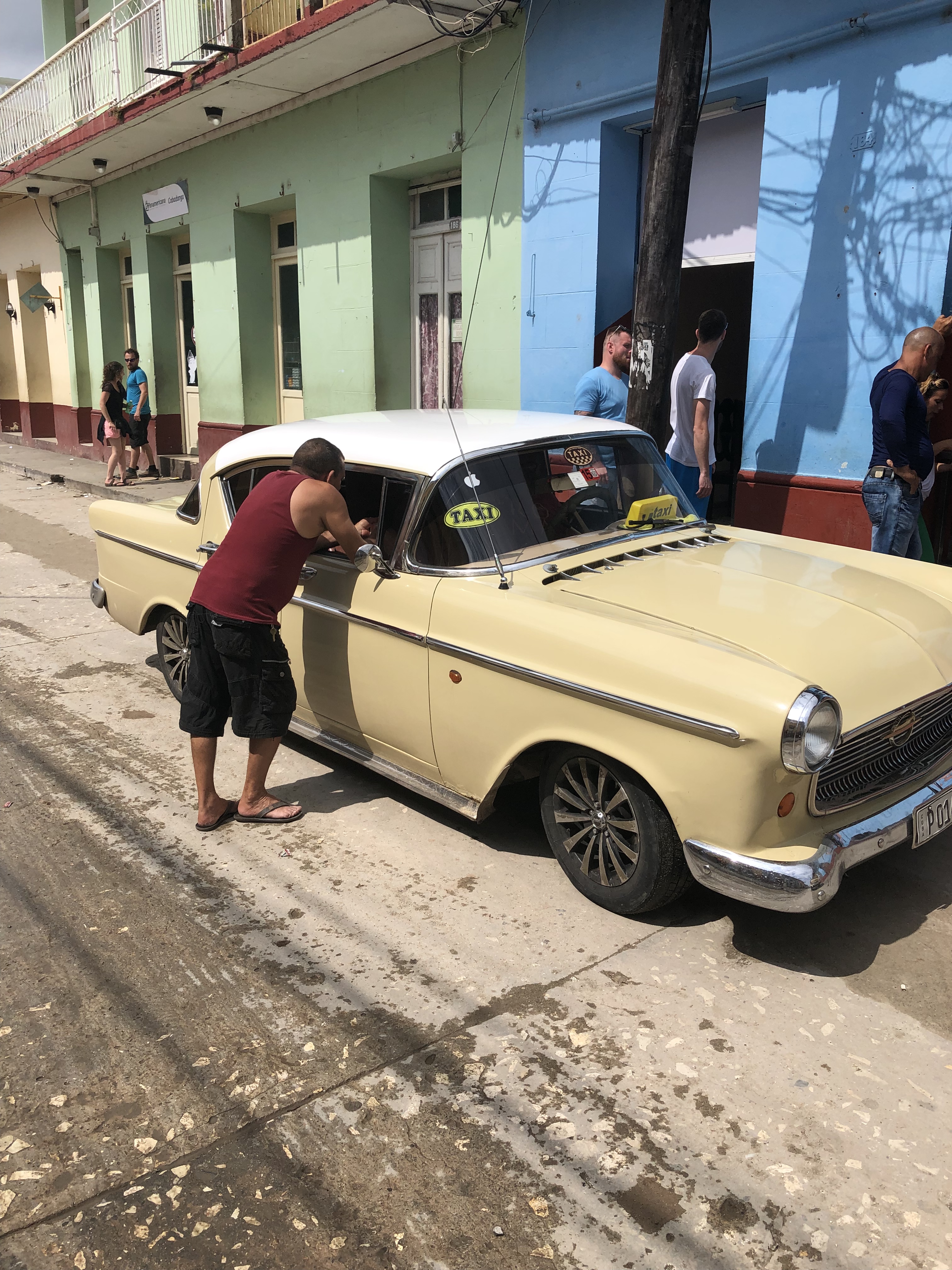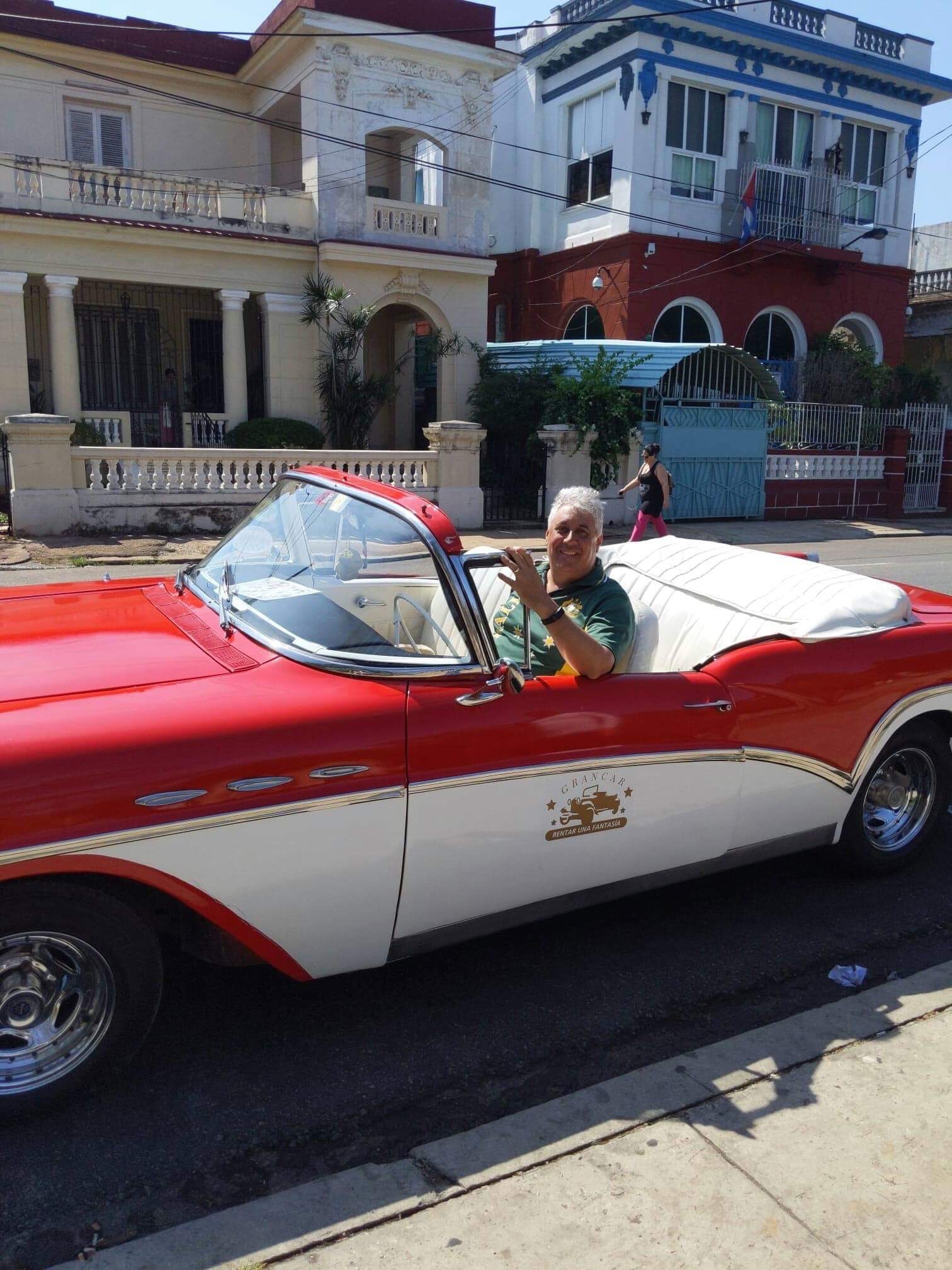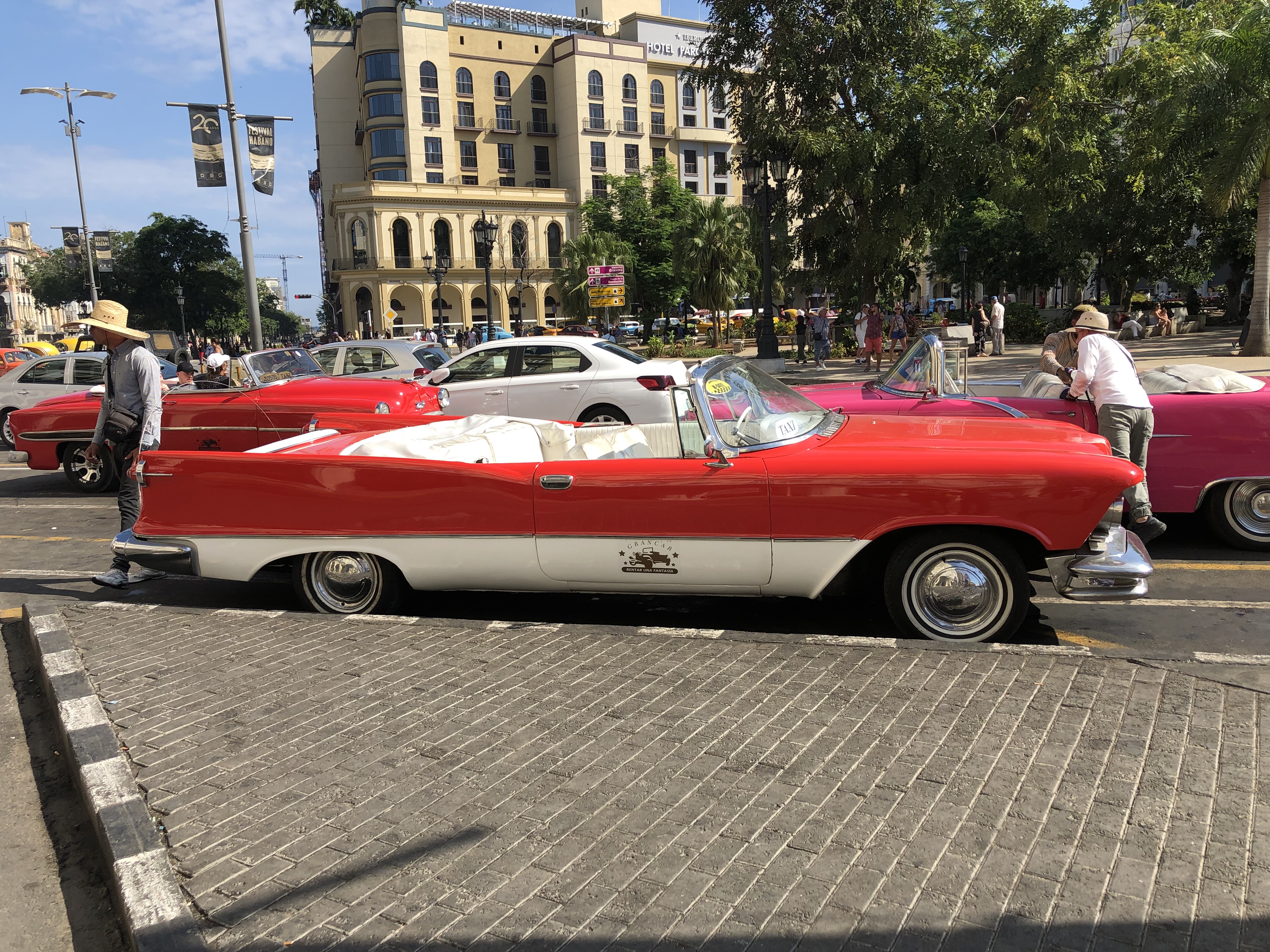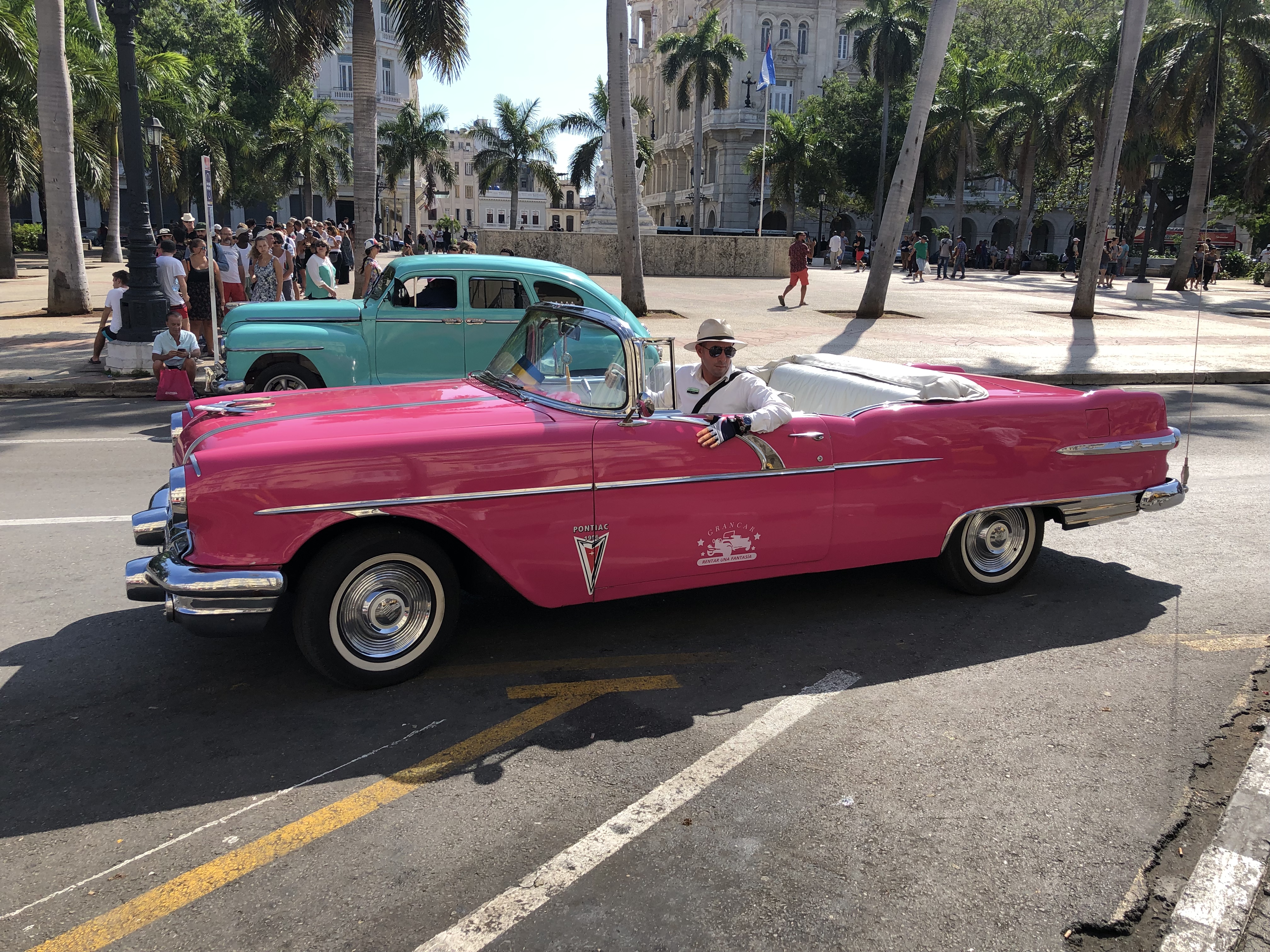Cienfuegos
Jill has two great loves in life…trains and chicken buses. On our last major foray travelling she could not go past a good train ride and when they aren’t available, enter the chicken bus. You have all seen the movies, dodgy little buses with some overly rural looking woman holding a live chicken (caged or uncaged). Well this is Jill’s idea of fun.
So for our 250 km journey from Havana to Cienfuegos, this was her choice. We hopped a cab to the bus station for me to be pleased that there was not a chicken anywhere in sight. In fact the long distance bus fleet was more modern than anything else on the road. We sat in a comfortable, air conditioned coach doing around 100km/h, on a well maintained 2-3 lane road almost the whole way. And when we got off that we got on a standard dual carriageway, in good repair, that ran through beautiful farmland. Later on, it ran parallel to the ocean throwing up some of the most stunning shades of blue imaginable. Playa Larga and Playa Giron were two of the stops along the way…while this may mean very little to most of you, Playa Giron is better known as the “Bay of Pigs”, where the Kennedy administration tried to invade and overthrow Cuba.
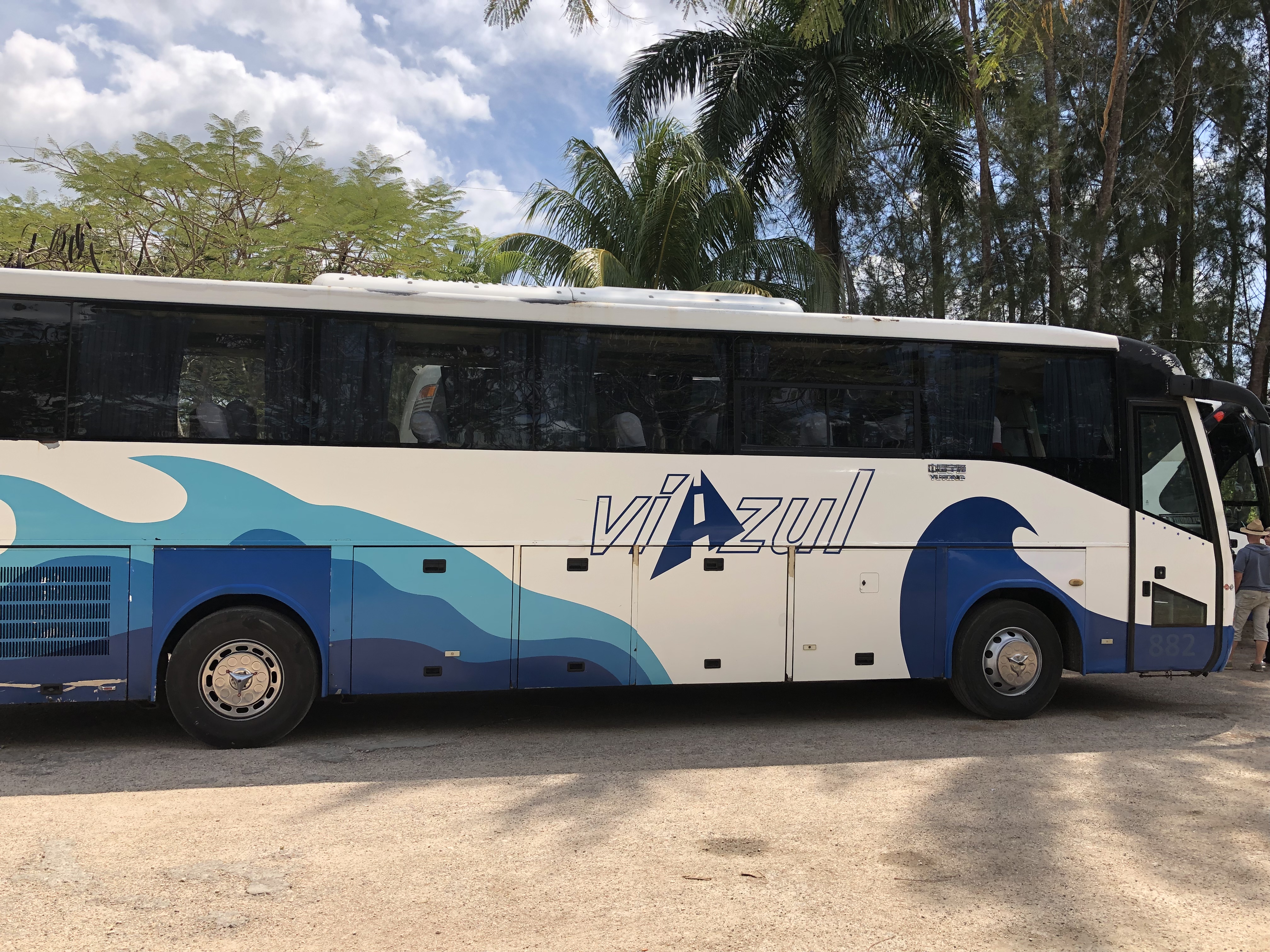 After a relaxing and pleasant journey we arrived in Cienfuegos mid afternoon and checked into the best of the home stays available (Bella Perla Marina) got the grand tour and headed out for our usual exploratory walk. As it happens, 2 hours is enough time to see all of the sights of Cienfuegos. We saw the town hall, theatre, cathedral (de la purisima concepcion), museum and a mock version of the Arch de Triomphe (Arco de triunfo).
After a relaxing and pleasant journey we arrived in Cienfuegos mid afternoon and checked into the best of the home stays available (Bella Perla Marina) got the grand tour and headed out for our usual exploratory walk. As it happens, 2 hours is enough time to see all of the sights of Cienfuegos. We saw the town hall, theatre, cathedral (de la purisima concepcion), museum and a mock version of the Arch de Triomphe (Arco de triunfo).

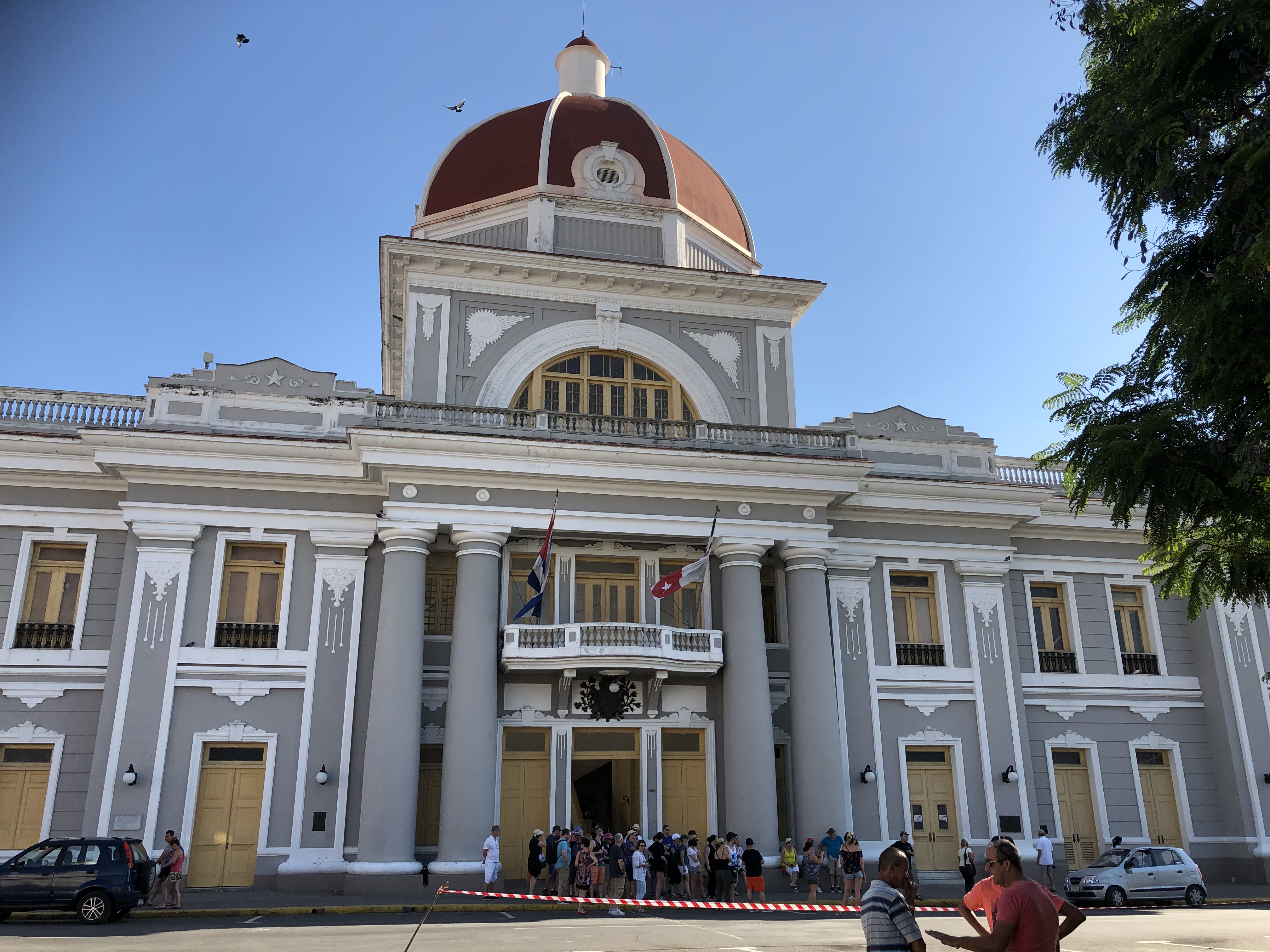

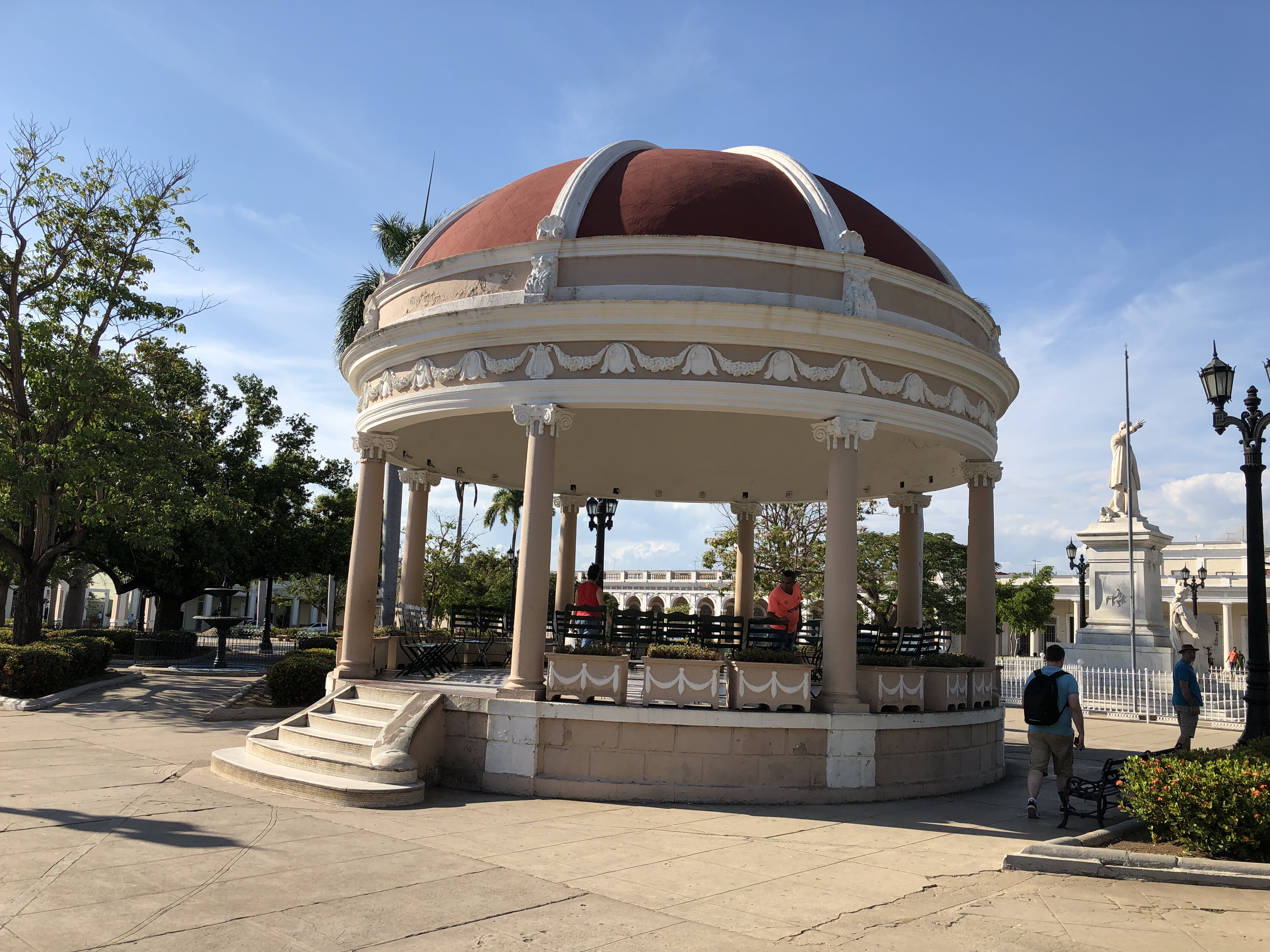
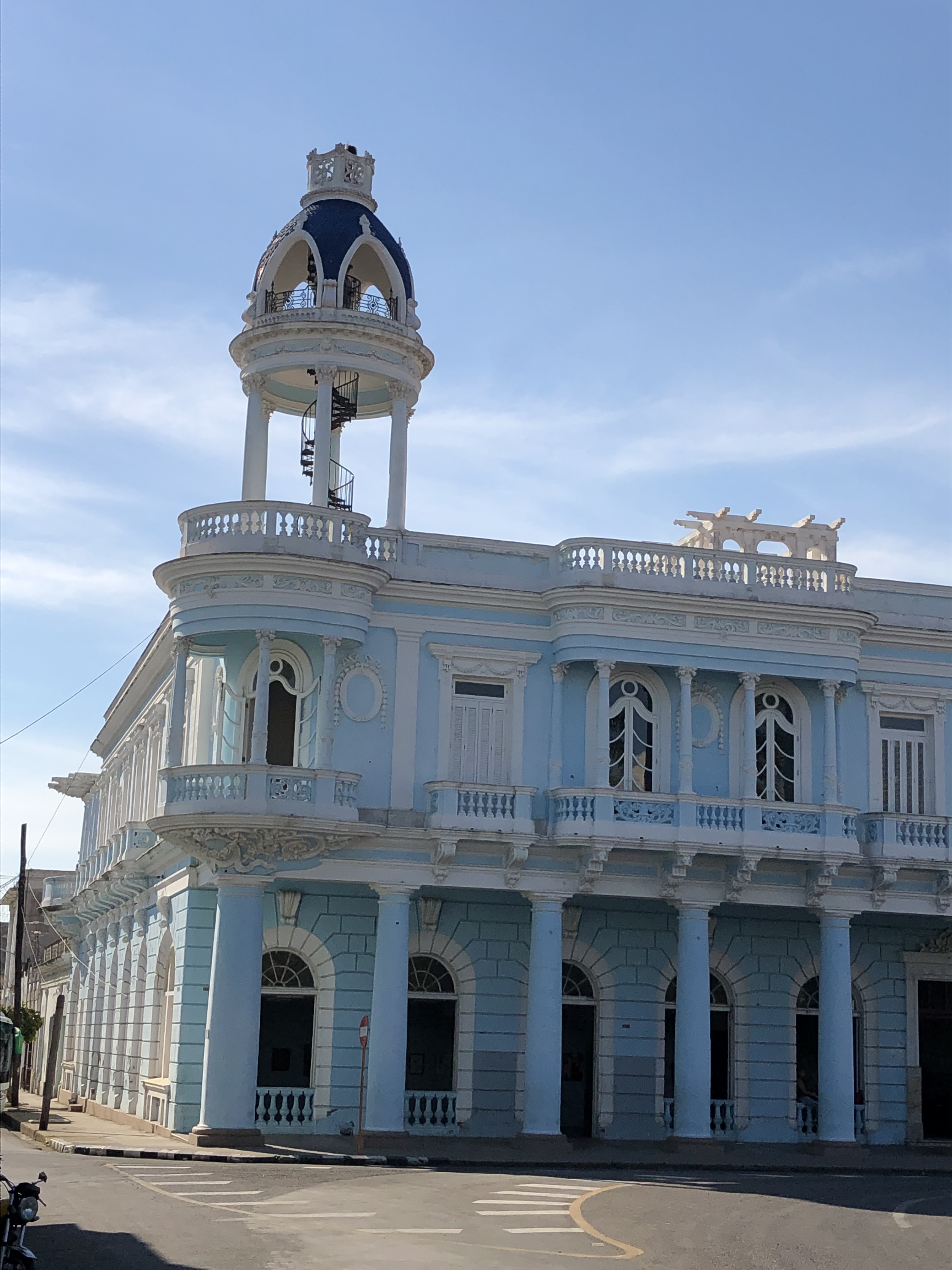

What would we do with the next 36 hrs.
We headed back to the guesthouse for a fantastic meal and one hell of a sunset from the rooftop garden and viewing platform.
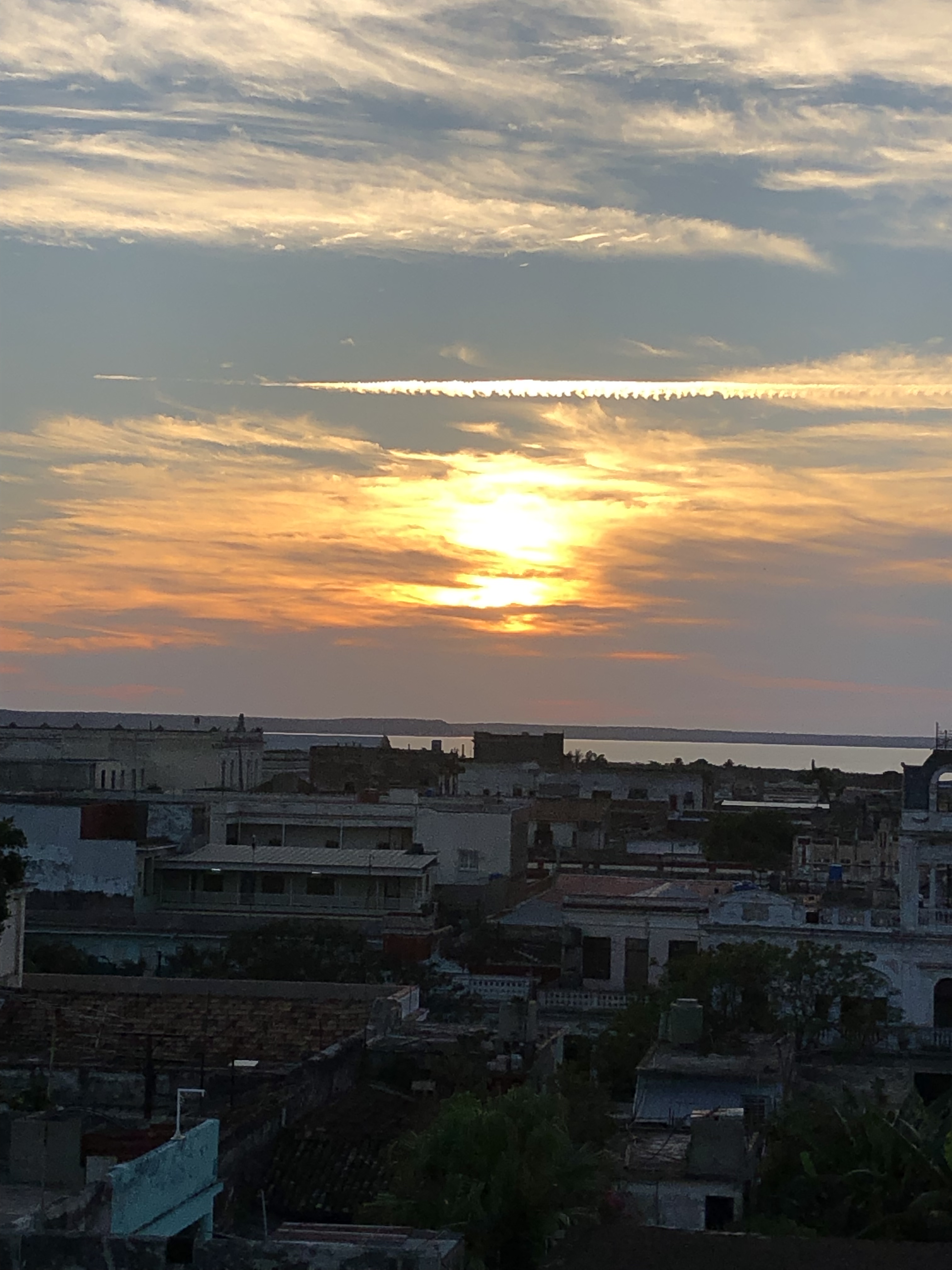
The vehicle fleet in Cienfuegos was quite different from that in Havana. The big flashy convertibles were non existent, but had been replaced with much better maintained versions of the Havana “B” fleet. Still lots of 1950’s vehicles but not as big and not as ostentatious. But the main type of taxi was the horse and cart and it seemed like around the corner from our joint was the local cab rank.
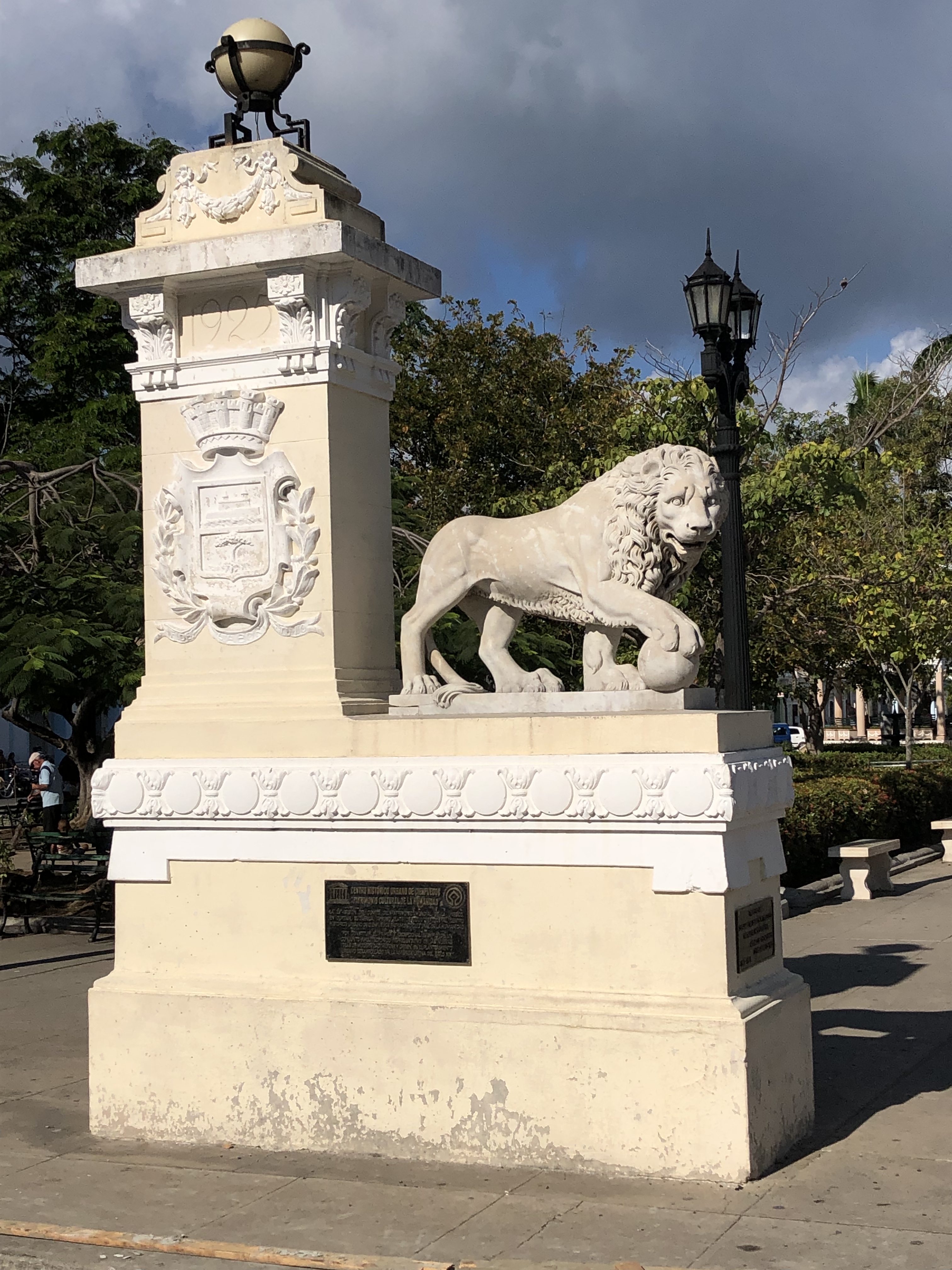
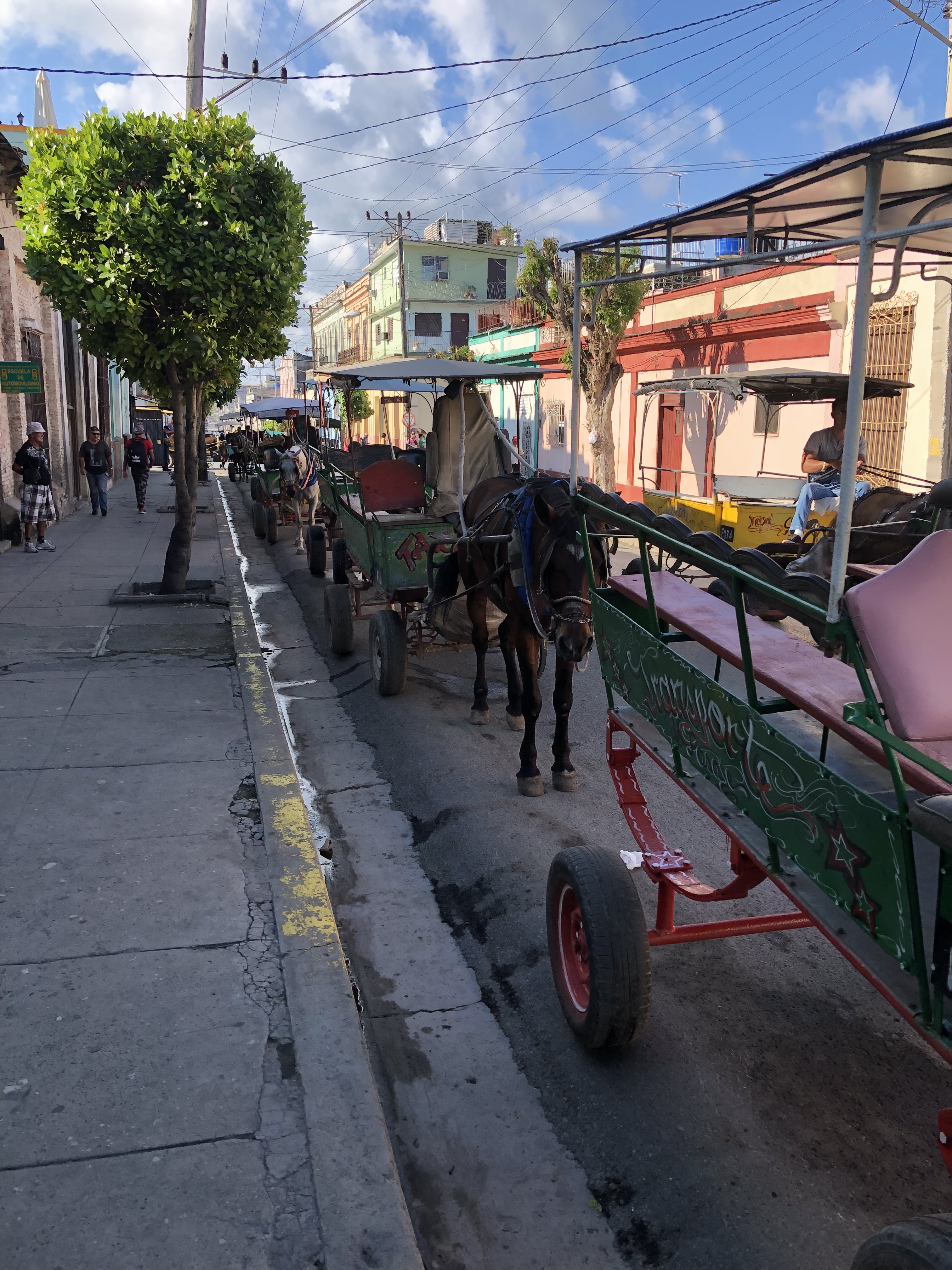

Day 2 of Cienfuegos saw us wandering along the malecon to the ritzy resort end of town. This part of the world is the home of 1960’s architecture and some of the homes are seriously cool, and immaculately maintained. We checked out the yacht club and some of the flashy hotels before catching a pedicab ride back to an expensive seafood restaurant and a lobster lunch (total bill under $40). Another great meal that night at the guest house and prepare for the next chicken bus.
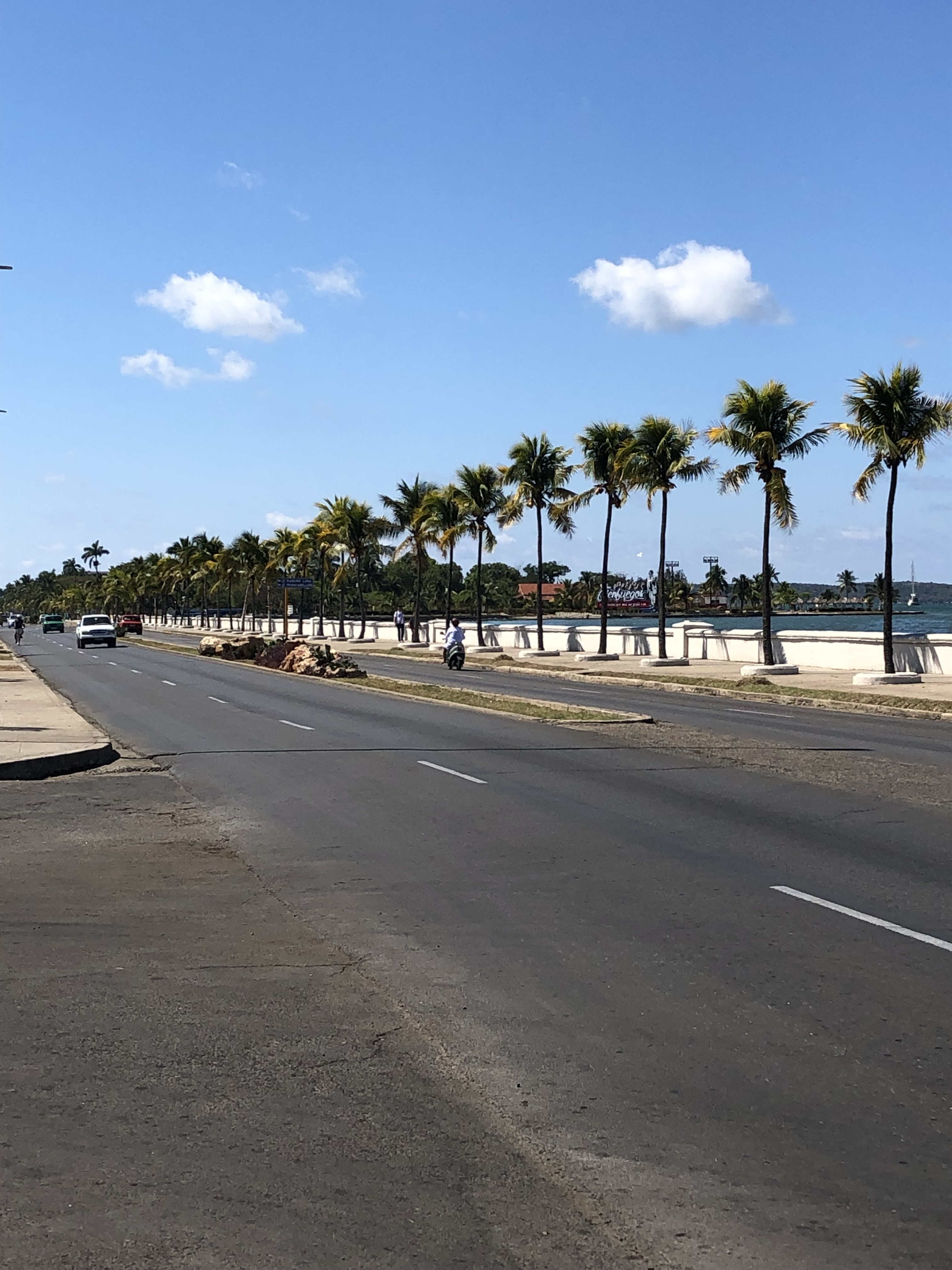
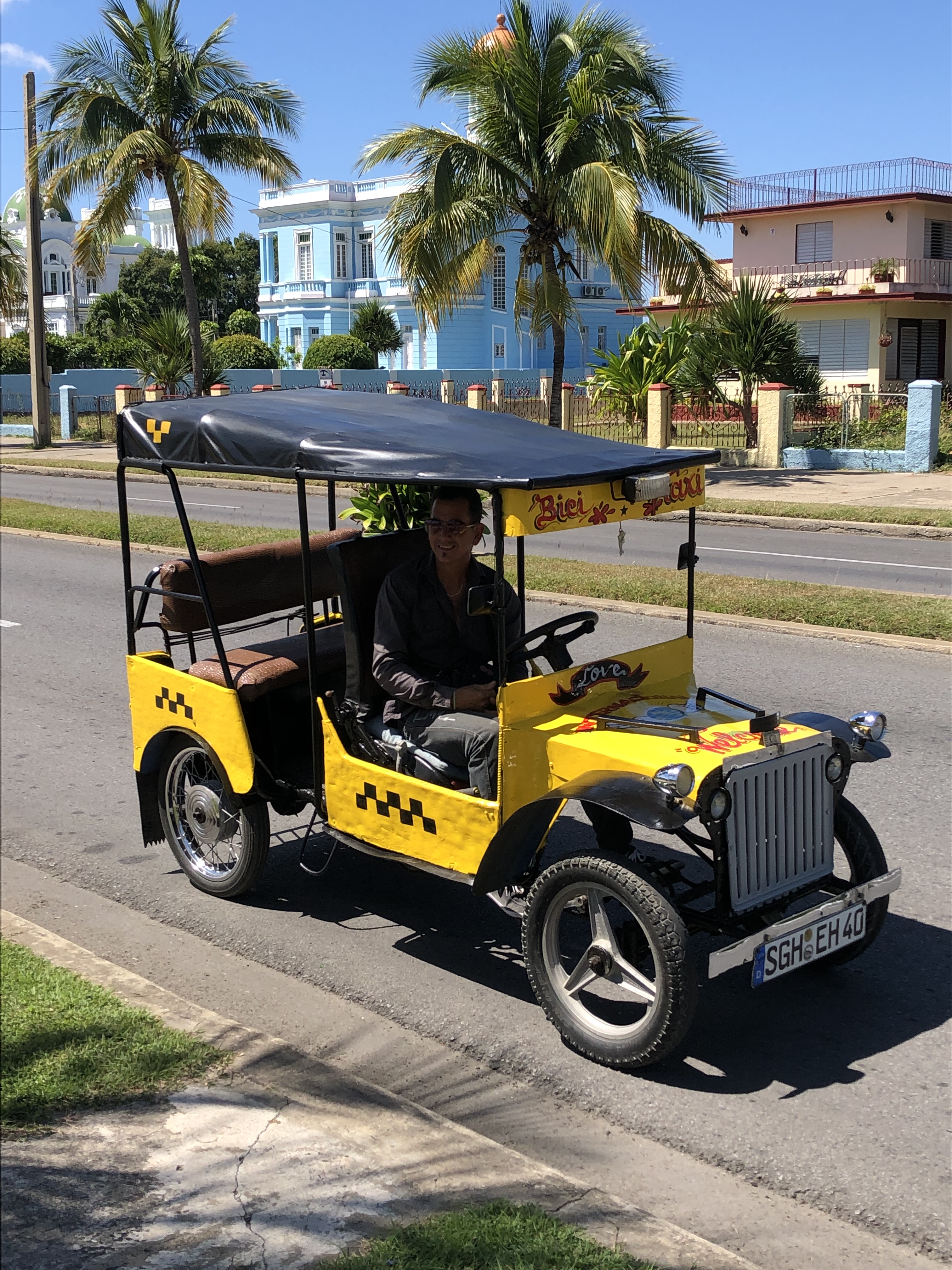
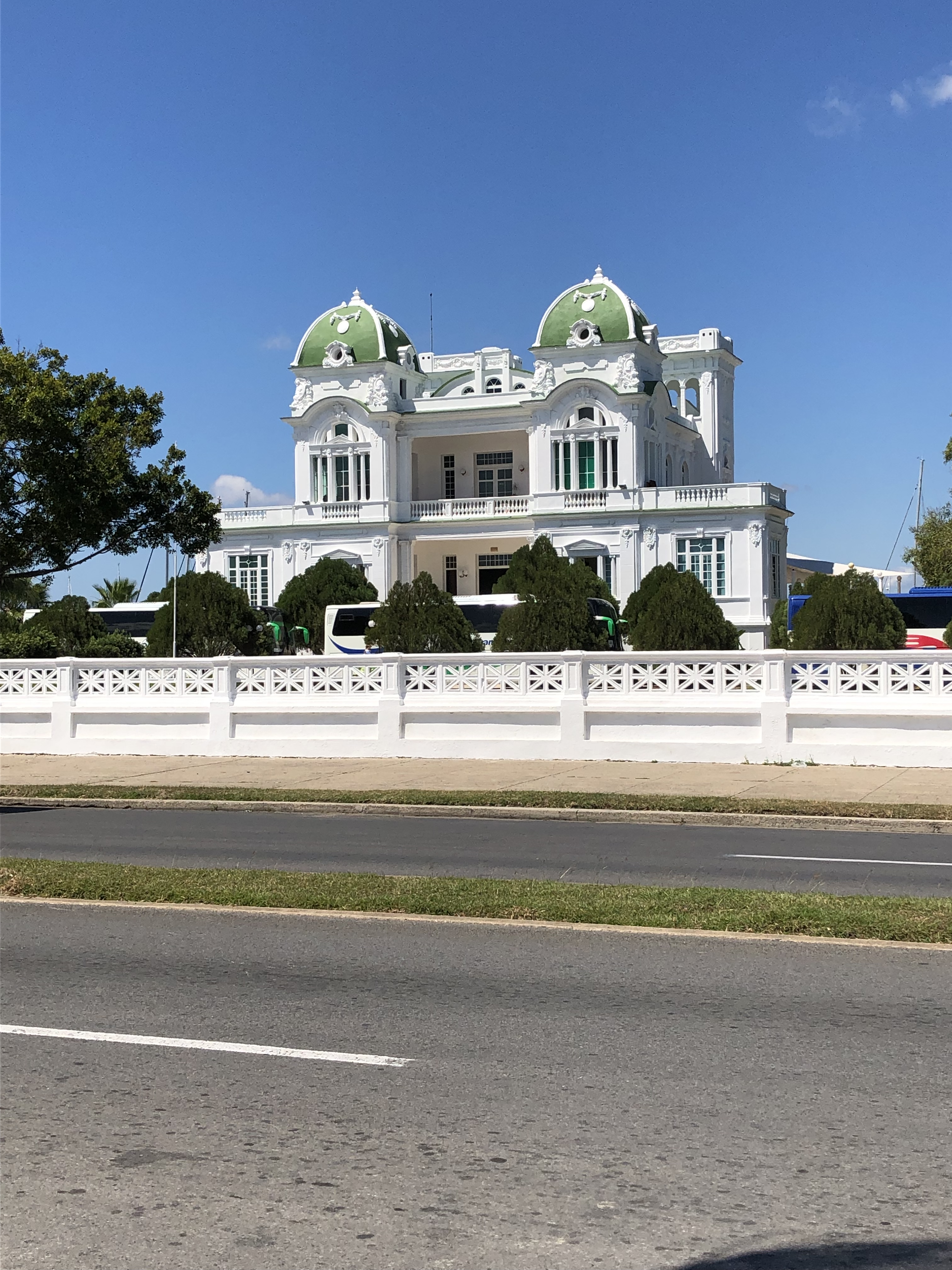
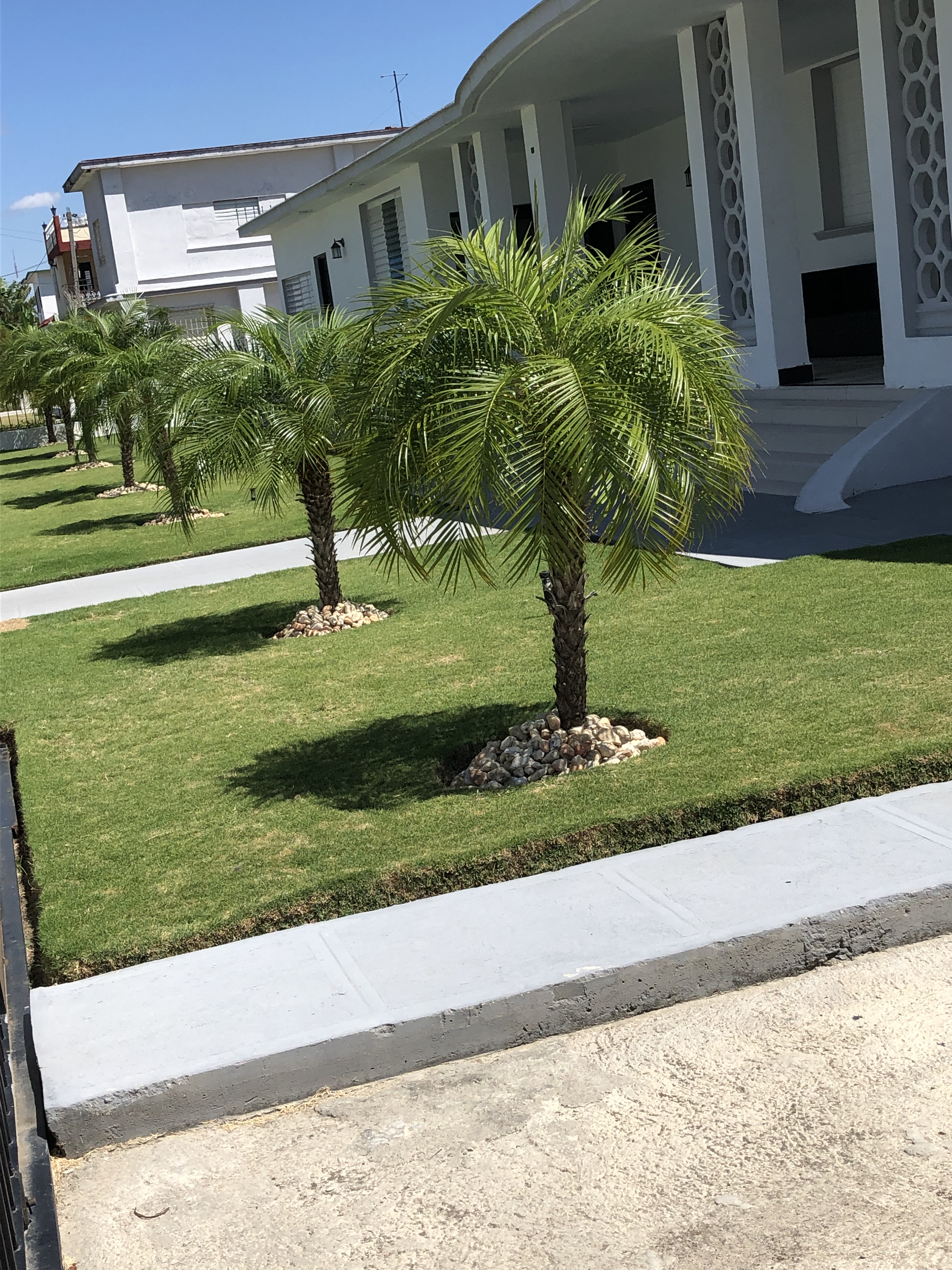

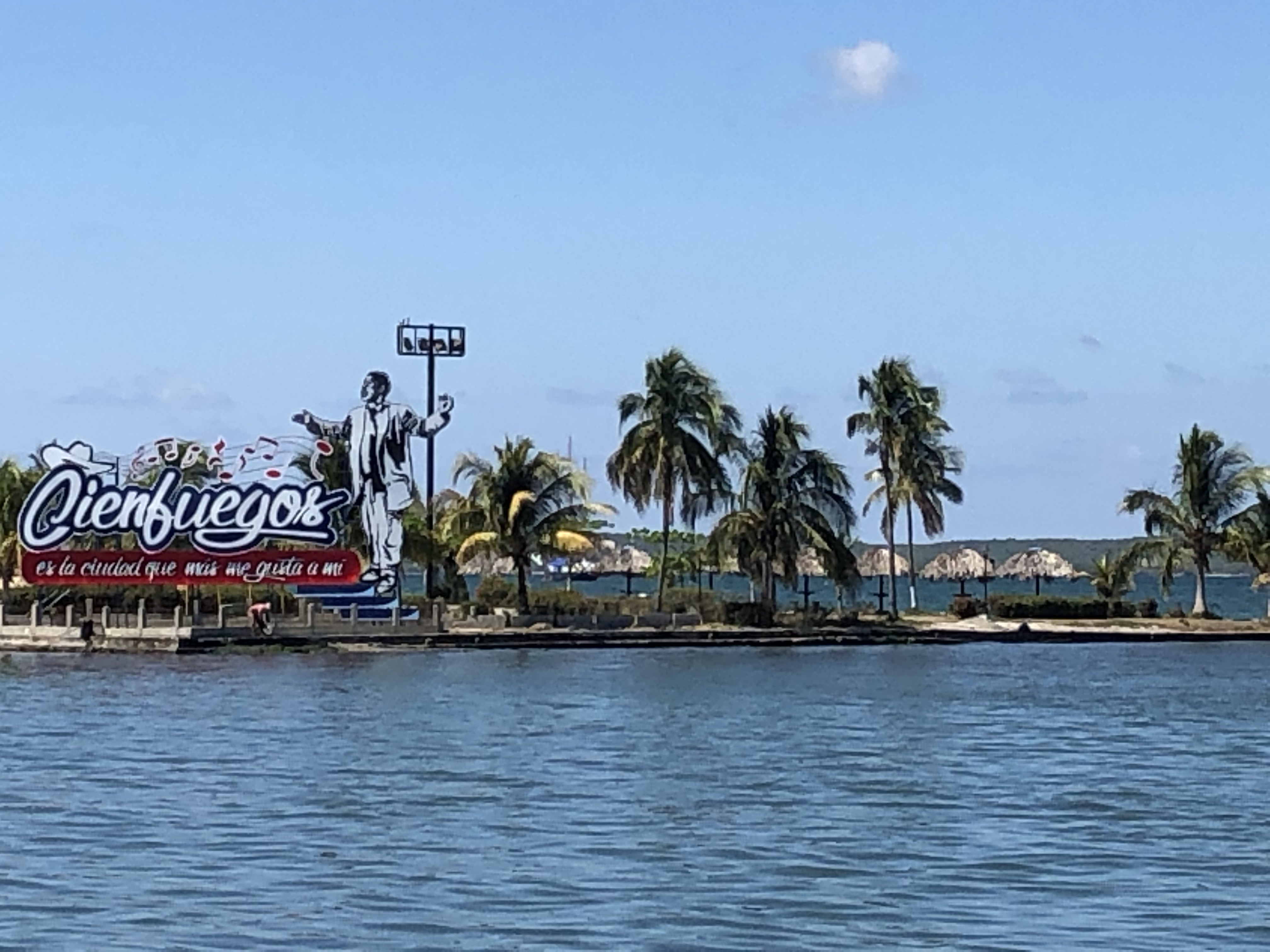

Trinidad
After a short 2 hr, chicken free, bus ride we arrived at the hilly town of Trinidad. Cobblestone streets meant that I had to use my bag as an actual backpack for the 4th time since owning it. Usually I can just use the wheelie bag option, but cobblestones make that a no go. So after trying to remember what happens when you unzip the straps, we did the 850 meter walk up and down hills lugging our packs on our backs. We were staying at yet another guest house (casa particular) and despite the $20 a night price tag, it was by far the best one we stayed in the whole time in Cuba.
Trinidad is another of those see it in 2 hrs kind of towns. So after a cold shower, did I mention that it is hot and humid in the tropics, we did the schlep. Once again we hit all of the sights early: the museum (x2), cathedral, church, Plaza Santa Ana. And settled in to some Cuban music and drinks on the steps of plaza Mayor.
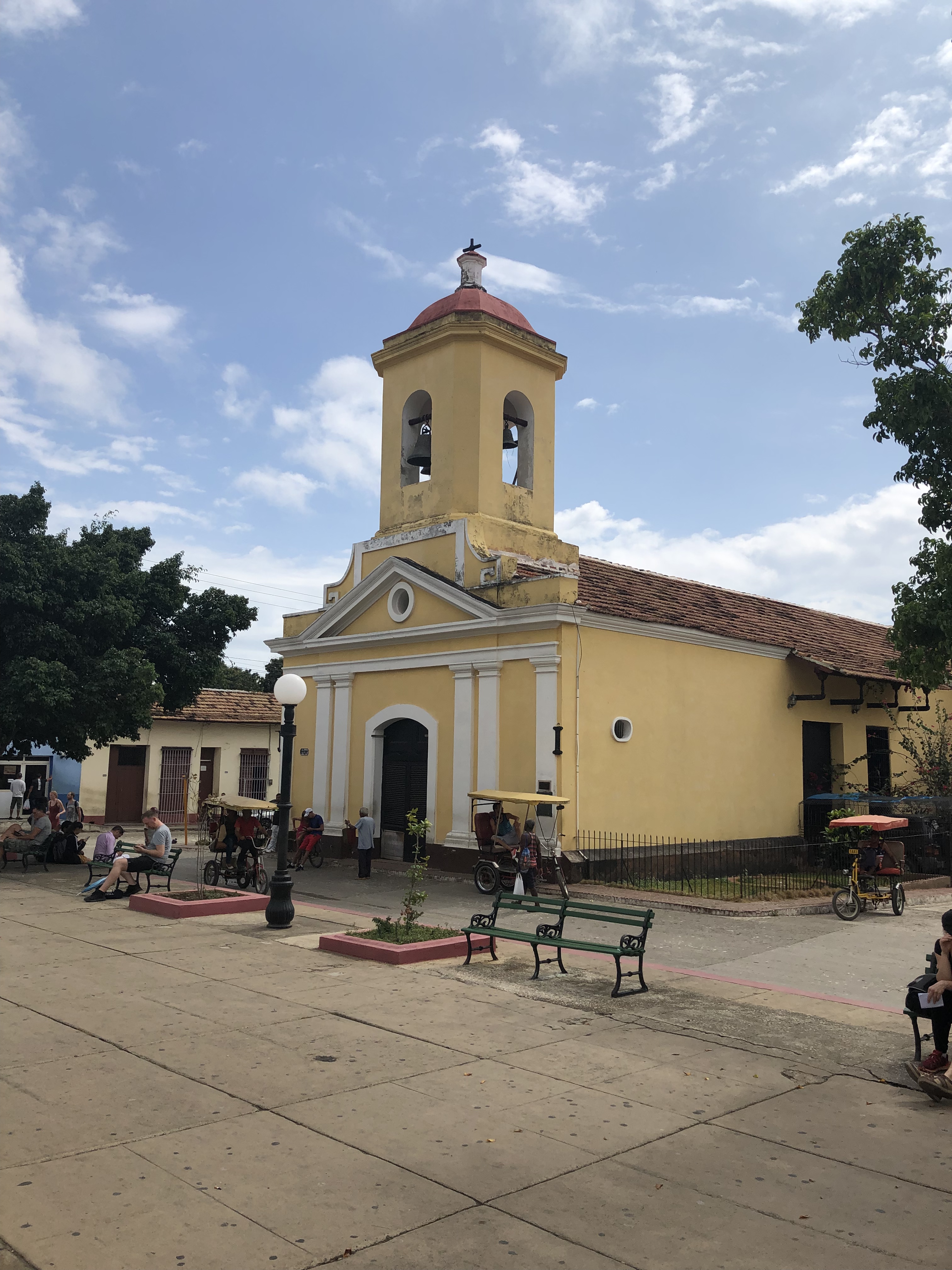
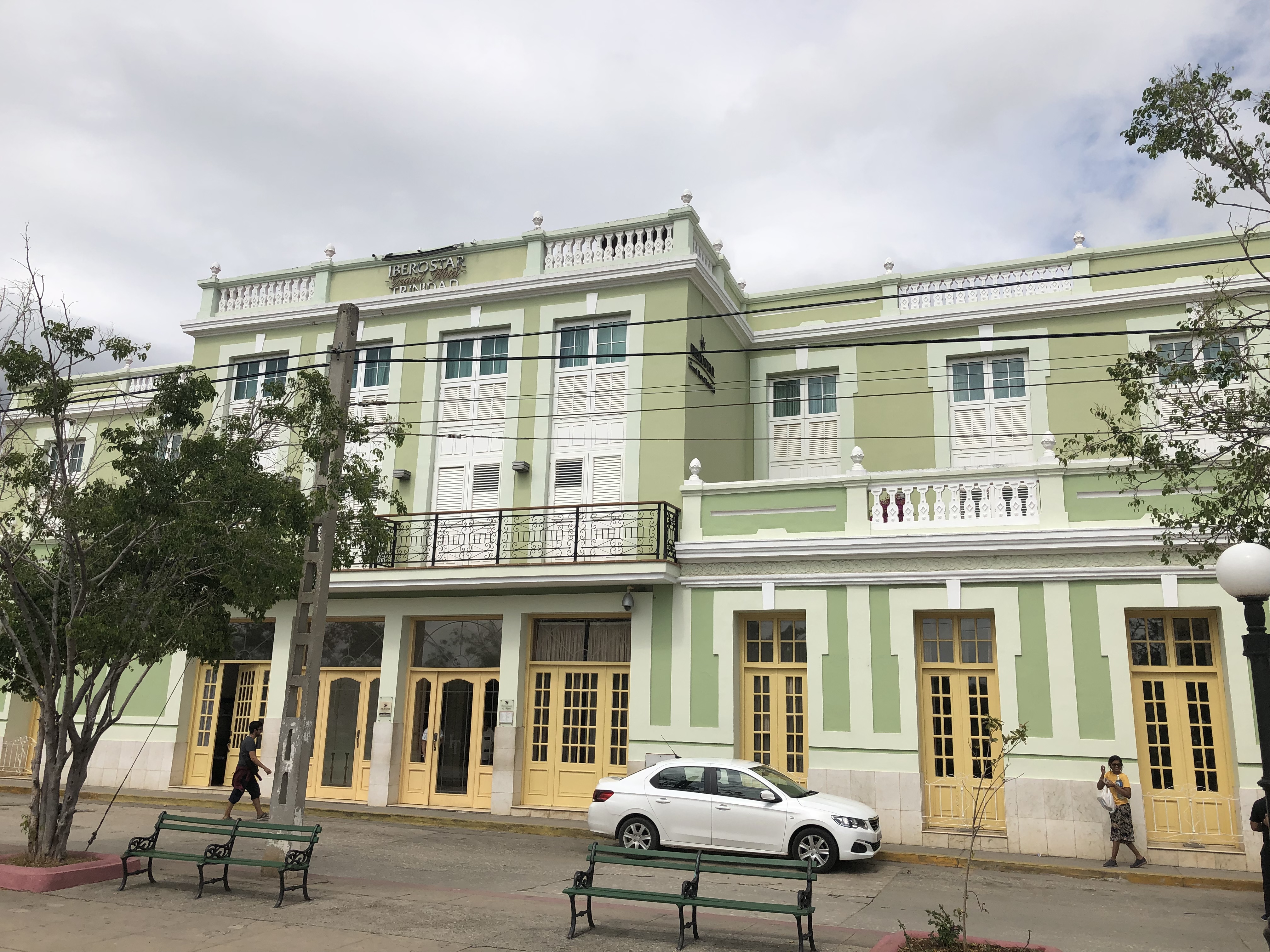
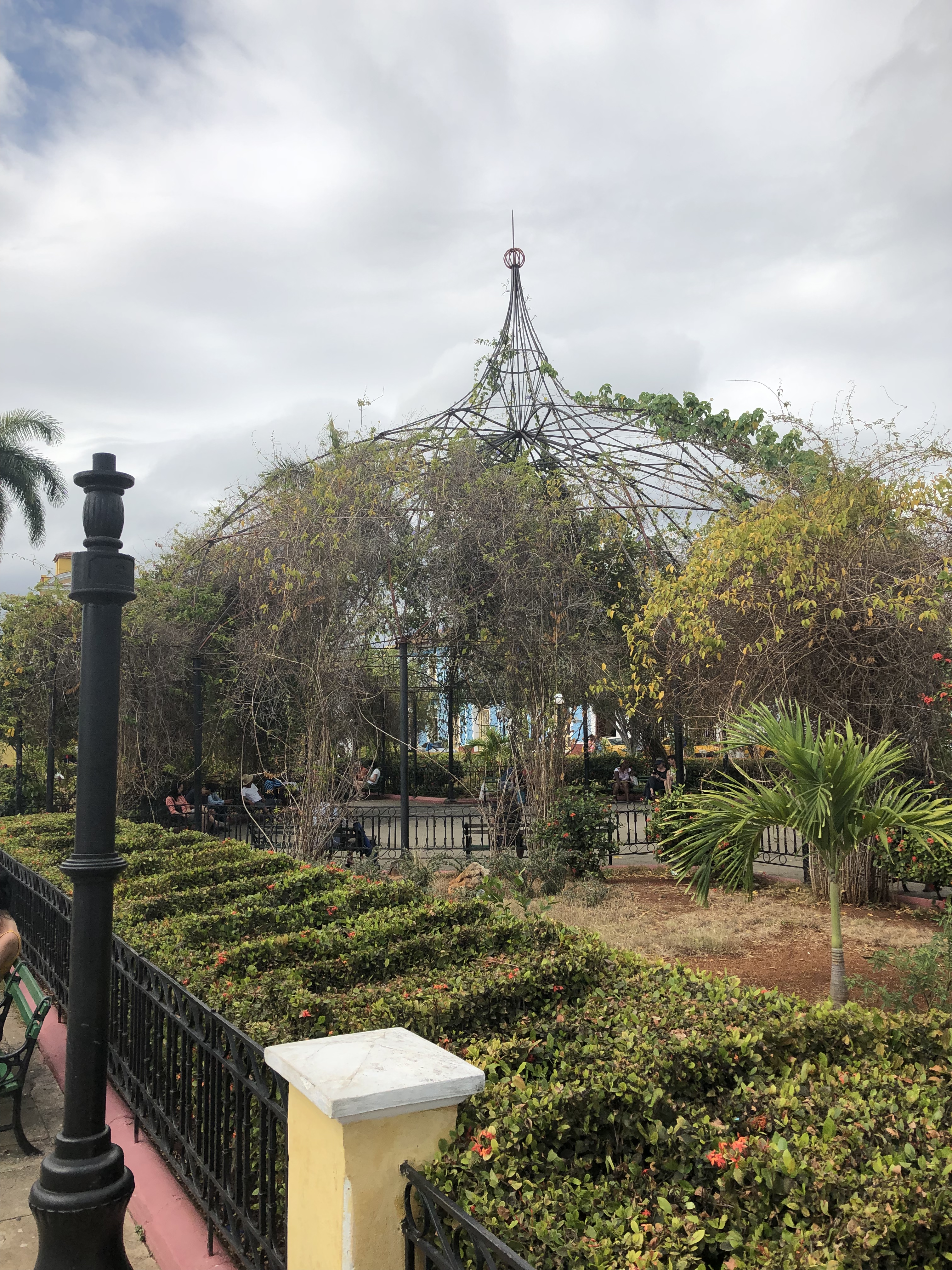
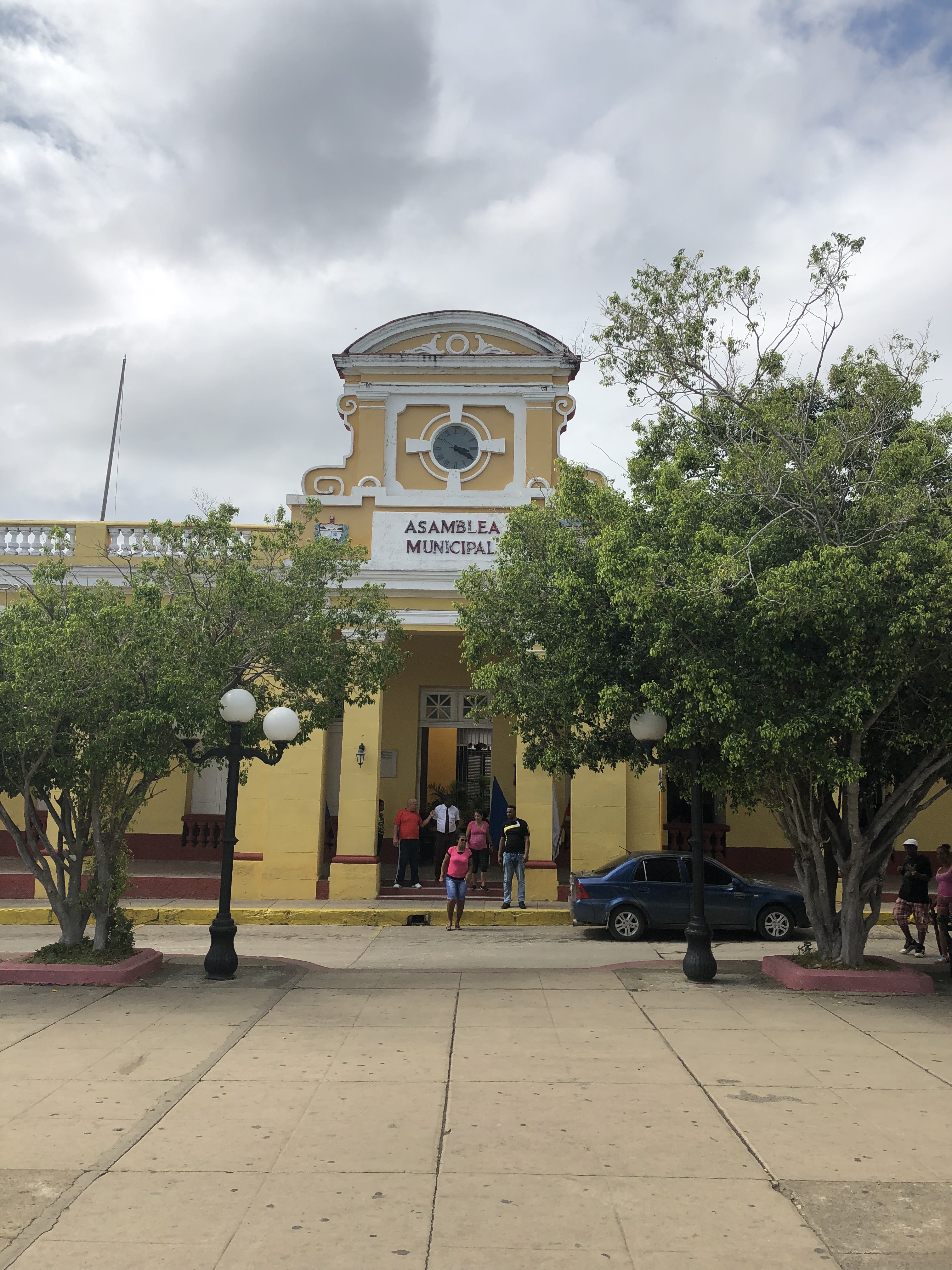
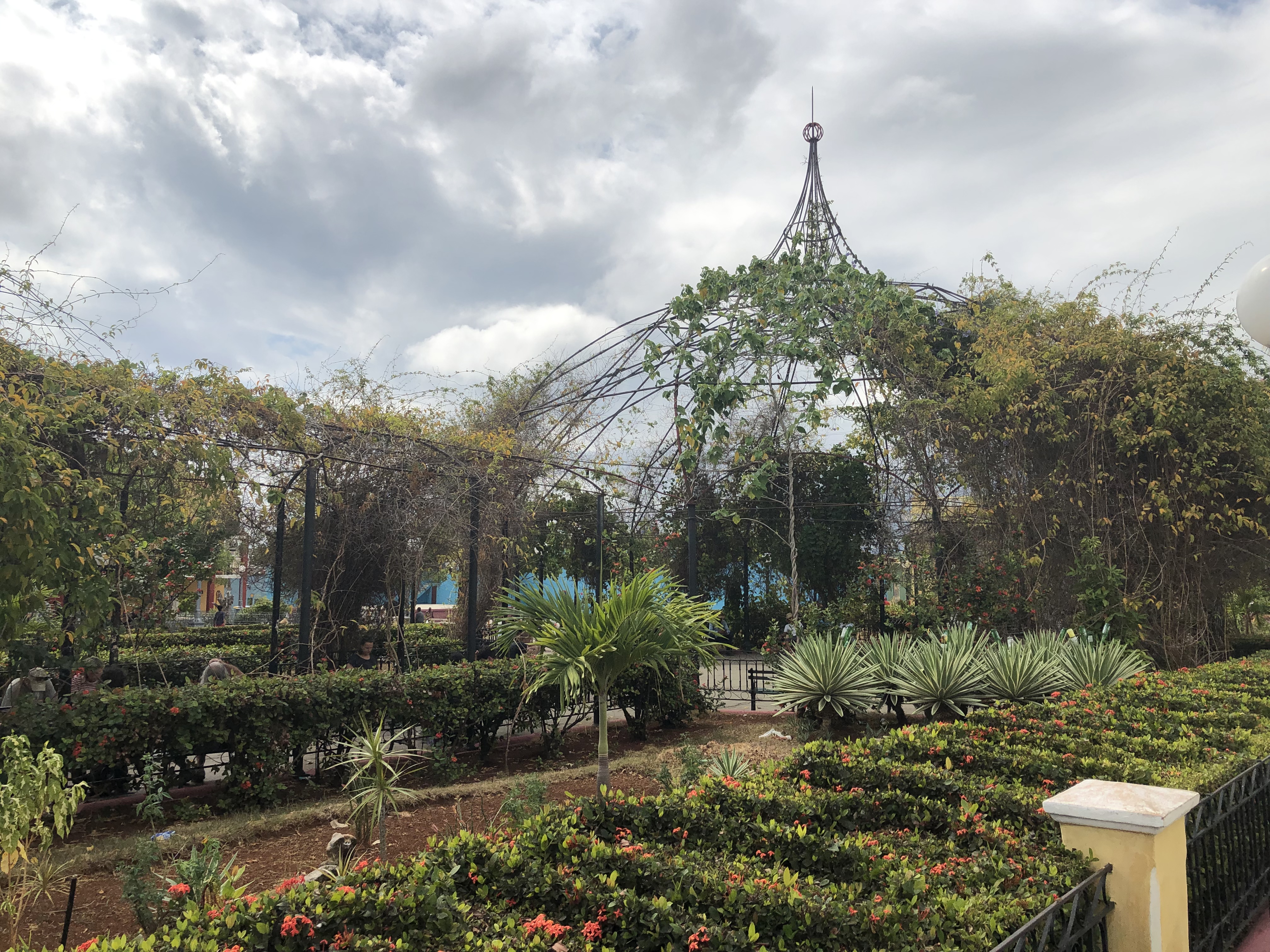
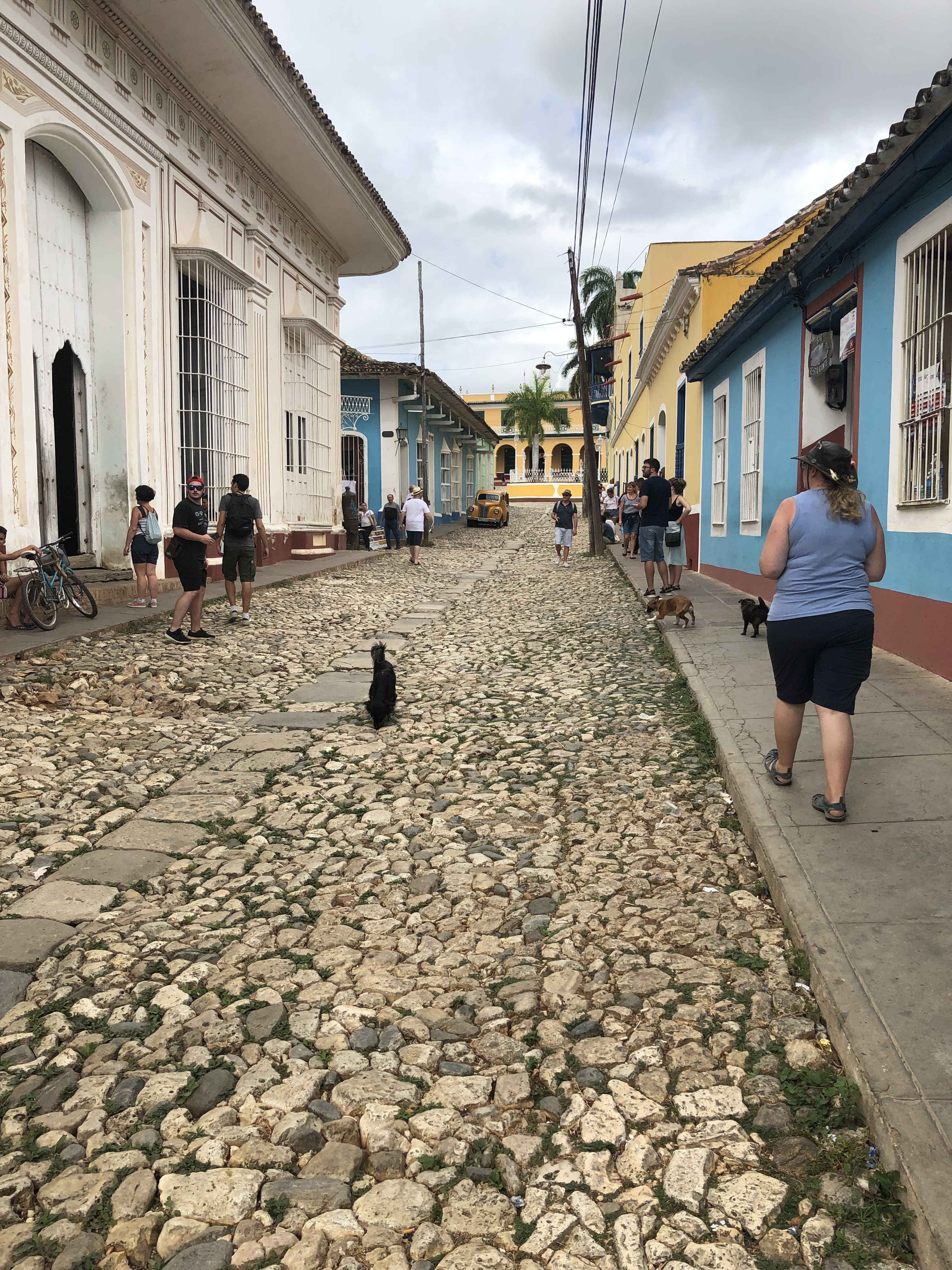
That is until a tropical downpour started. And it poured, for about an hour and a half it teemed. So we had cervezas and mojitos with a French couple until it finished.
An interesting sideline that we came across in Havana and now again in Trinidad was the use of old cannons as bollards in the street. I guess with the Spanish and pirate heritage of the region, there were no shortages of cannons either laying about or contained within sunken vessels near the shore. Many of these have been salvaged, repurposed and buried to block traffic into pedestrian areas. It is nothing massively noteworthy but adds to the charm of the place.
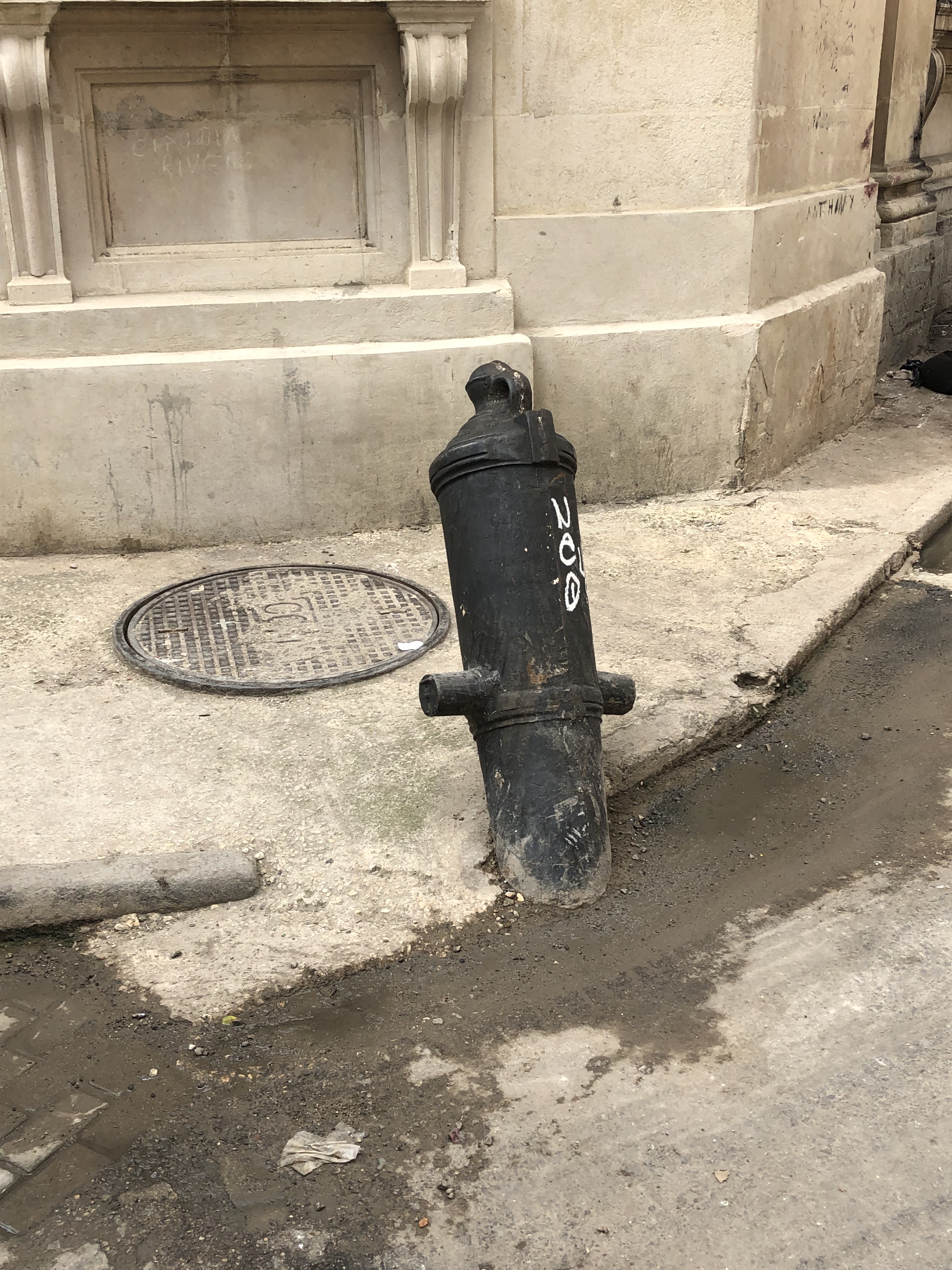
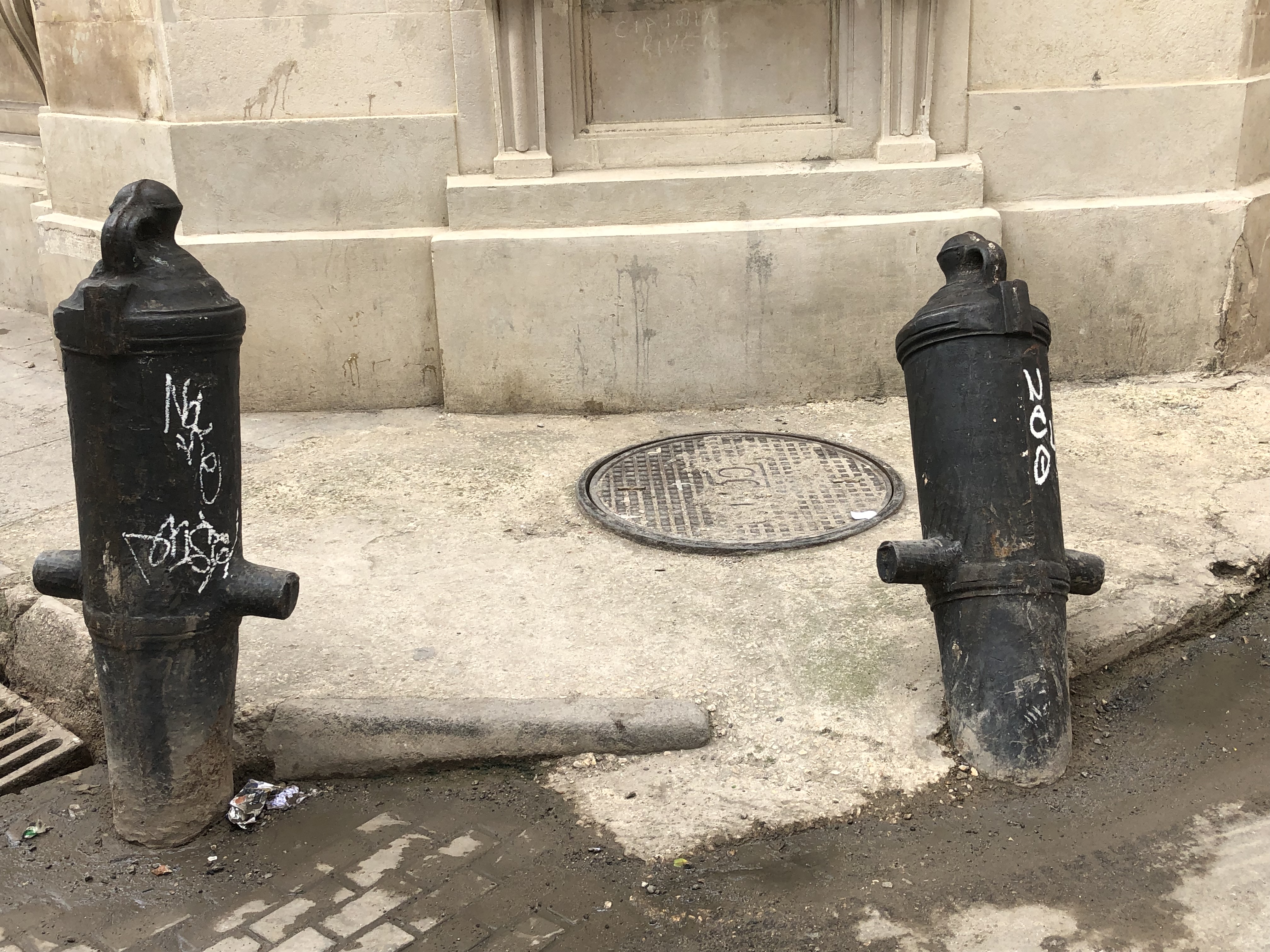
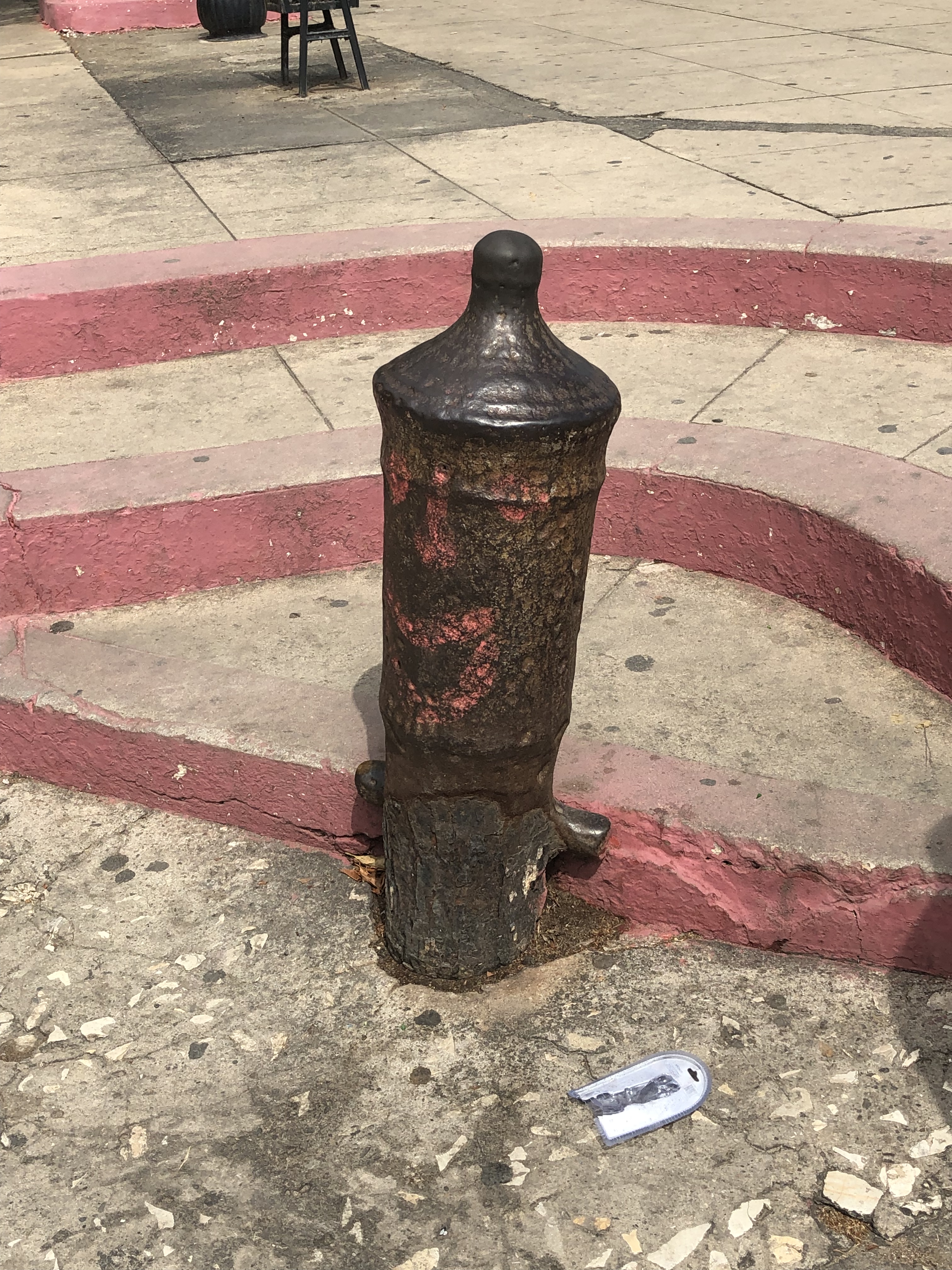
Fourteen kilometres down the road from Trinidad is Playa Ancon one of the best beaches in the country. So on day 2 we hopped a cab and spent 4 hours lazing on pristine white sand underneath palm frond umbrellas. I lolled about in the water while Jill worked on her Canberra tan.

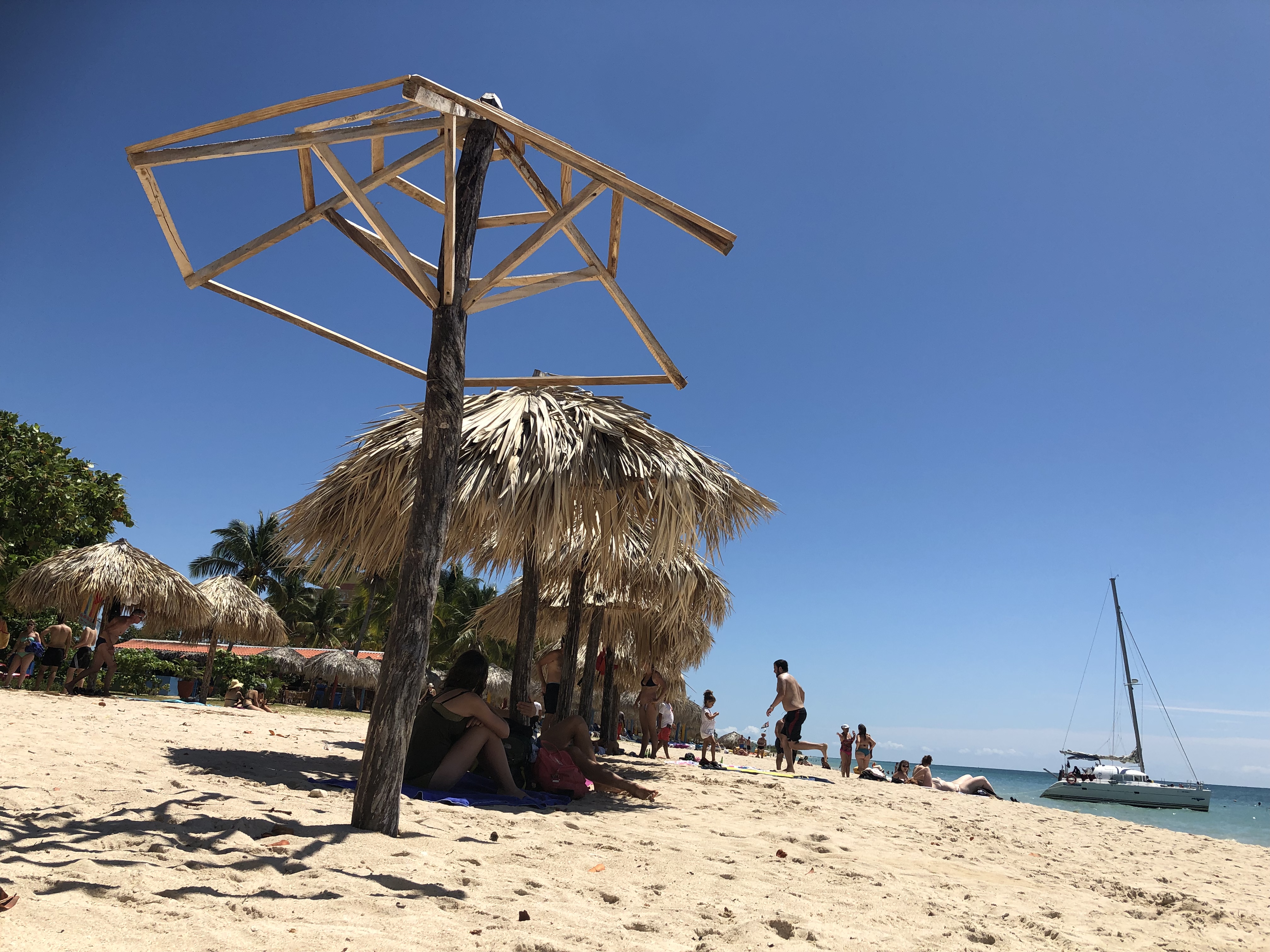
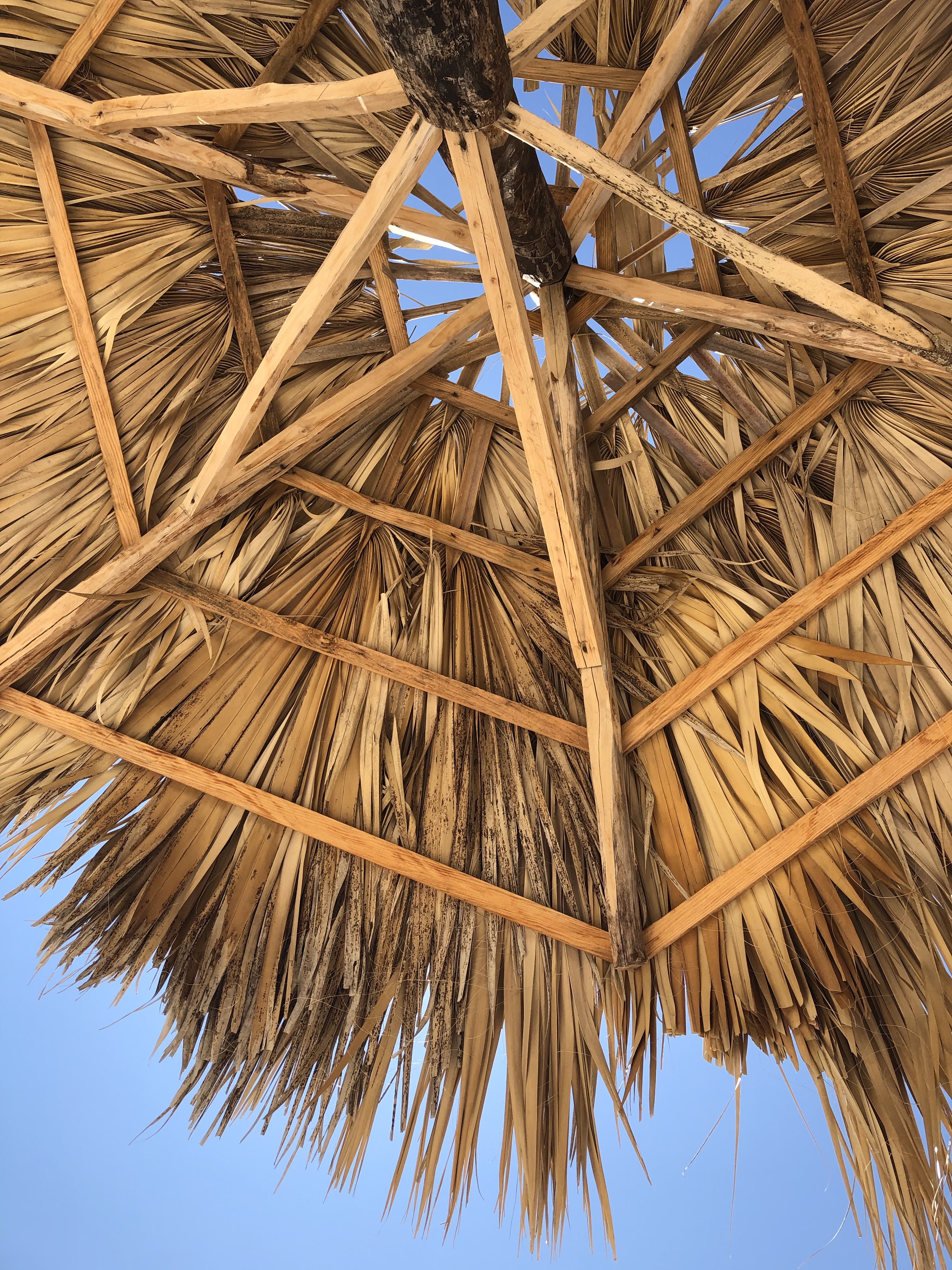
You wouldn’t believe it…I got sunburnt…I haven’t been sunburnt in decades. Something about the tropical sun, breeze and water got me. I got red as a beetroot on my chest and a bit on my back. It is a shame it is about a week early otherwise I could have blamed it on the “April Sun in Cuba”.
Another early start for a 6 1/2 hour bus ride to one of the few beaches in the country reportedly better than Playa Ancon.
Varadero
Varadero is little more than a resort town, so very little in the way of tourist sights. No cool looking buildings, just rows of modern resorts, bars, trinket shops and restaurants. What the resorts do offer are all inclusive packages and many of them offer child free experiences. So for people like us who do not enjoy noisy rugrats messing up your holiday bliss, this could have been for you. But in reality it just a town full of drunk eurotrash.
An interesting note that we learned was that Al Capone had a mansion here right on the ocean front. Of course it has now been turned into a guest house and restaurant.
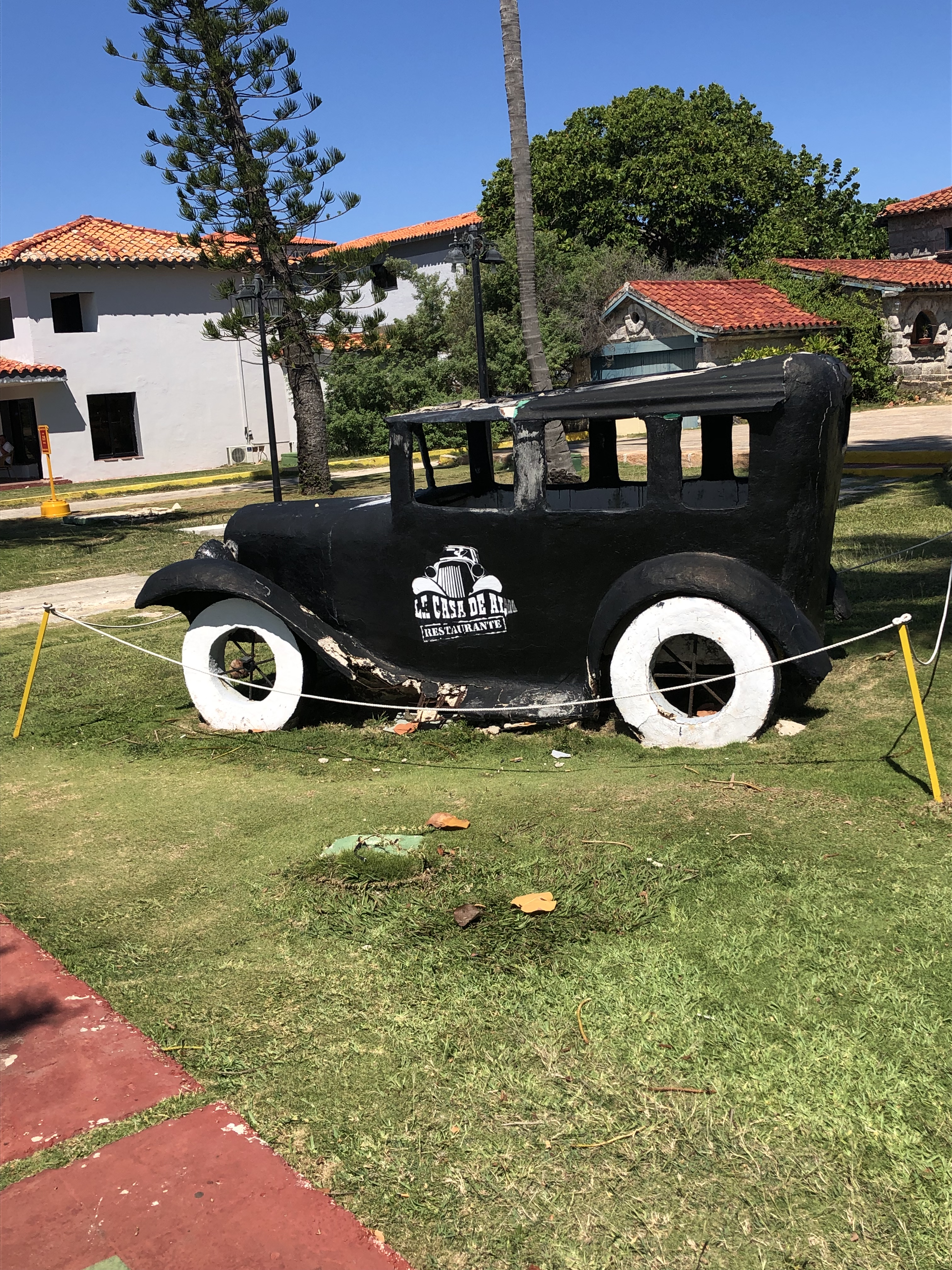

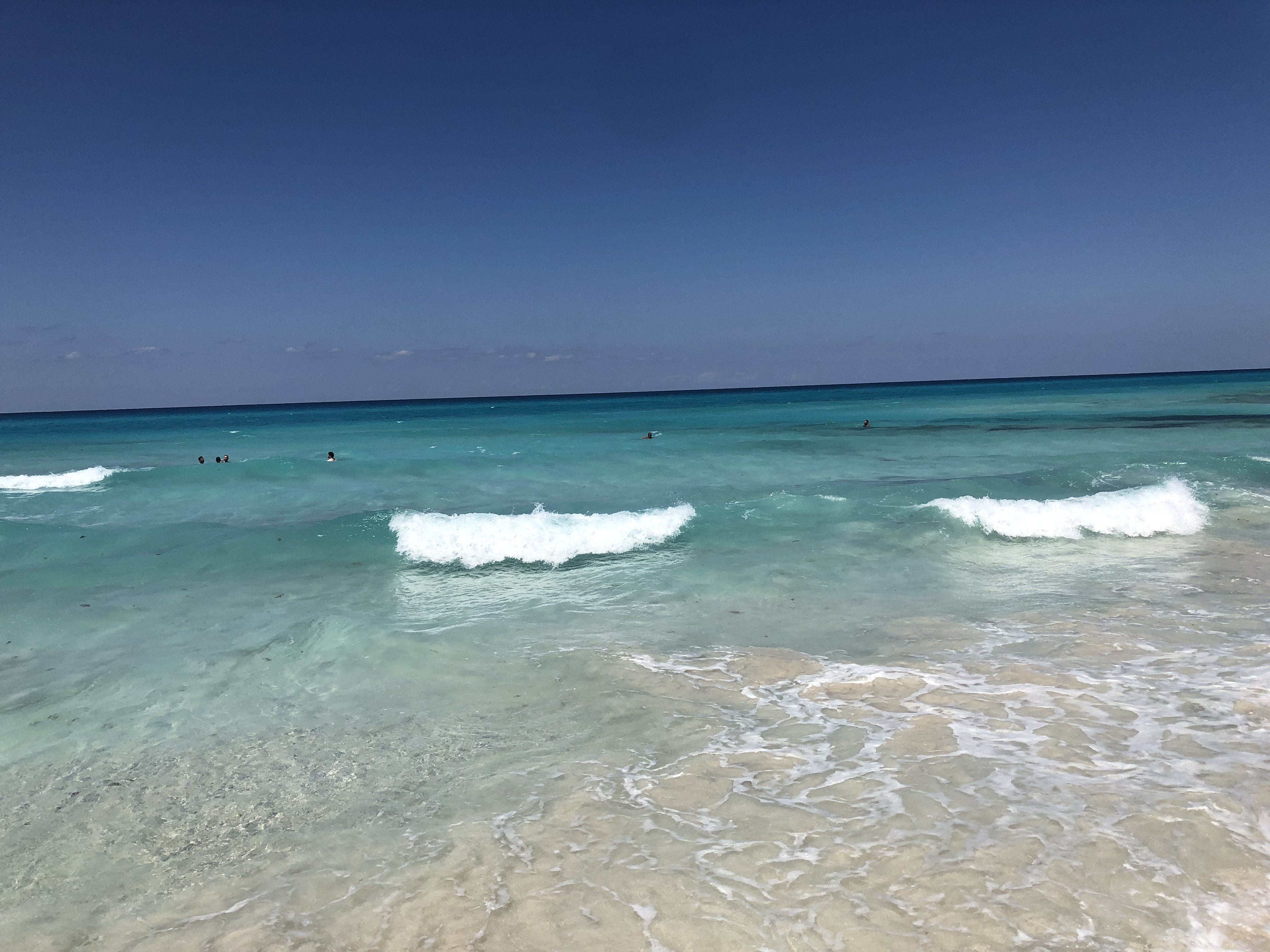
The fact that most of the resorts offer all inclusive packages means that all of their food and drink is included. As such, there is very little need for them to leave. Which means that competition at the local restaurants is fierce. This we thought would be great news for us as we were not doing the package thing. But it was anything but, the restaurants tended to be more specialist or boutique. The prices were through the roof (by Cuba standards), the food was below par and according to Jill the mojitos were weak.
Don’t get me wrong, the beach was nice (if a little too much seaweed by Australian standards). You could get an ok meal cheaply. And Varadero could be considered a good holiday by some… just not us.
But as with all of Cuba, the classic cars were everywhere. We got a 1957 Plymouth as our standard cab from the bus station. We wandered the street to see gangs of drunken package tourists, clinging to their refillable booze jugs or kegs, being generally loud and obnoxious. And I am sunburnt, here I am an Aussie surrounded by Europeans and I am the one glowing red. I feel like I should hand back my Australian card…poor form.
In short Varadero was hellish, but it was insightful as an example of everything that we would never want to do on a holiday.
Cuba an overview
On the whole I loved Cuba and am so glad I got to experience it before the tourist hoards turned it into every other largely homogenous island nation. But it is an island of contradictions. Many of the things that give it its charm are also detractors to its effective operation.
Rubbish collection is a major issue in Cuba with many corners occupied by stinking, messy skip type bins awaiting removal. Dogs infest the streets during the day, rifling through the uncollected rubbish bins. Cats cannot be seen during daylight hours but come out in force at night and (yep you guessed it) raid the uncollected rubbish bins. This means that very little of the rubbish remains inside the original receptacle but rather is scattered in the vicinity. And when it does get collected, only that which remained in the bin gets removed, leaving piles of filth and stink on many corners.
The lack of internet was annoying but less of an issue than I thought it would be. The adoption of the French attitude to smoking (including at meal tables) was more of an issue than I thought it would be. But the people are wonderful. There is virtually no crime, no drugs, no guns just sunshine and sea breezes.
Propaganda (anti US) remains high to this day. Billboards are filled with images of Fidel Castro or Che Guevara and words like viva la revolution are commonplace, especially in the country areas.
And of course there are the cars…
